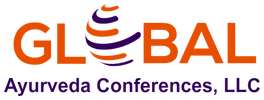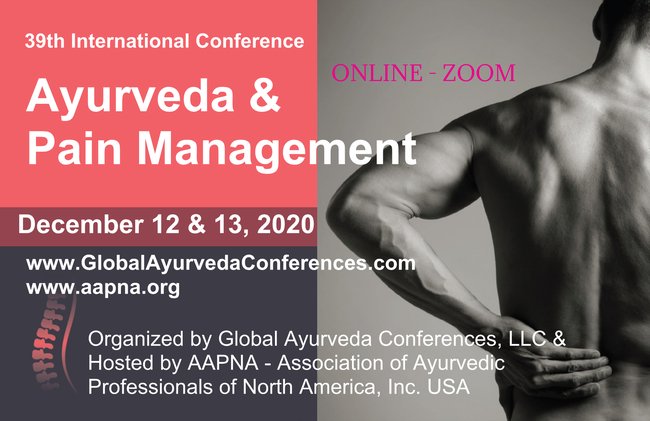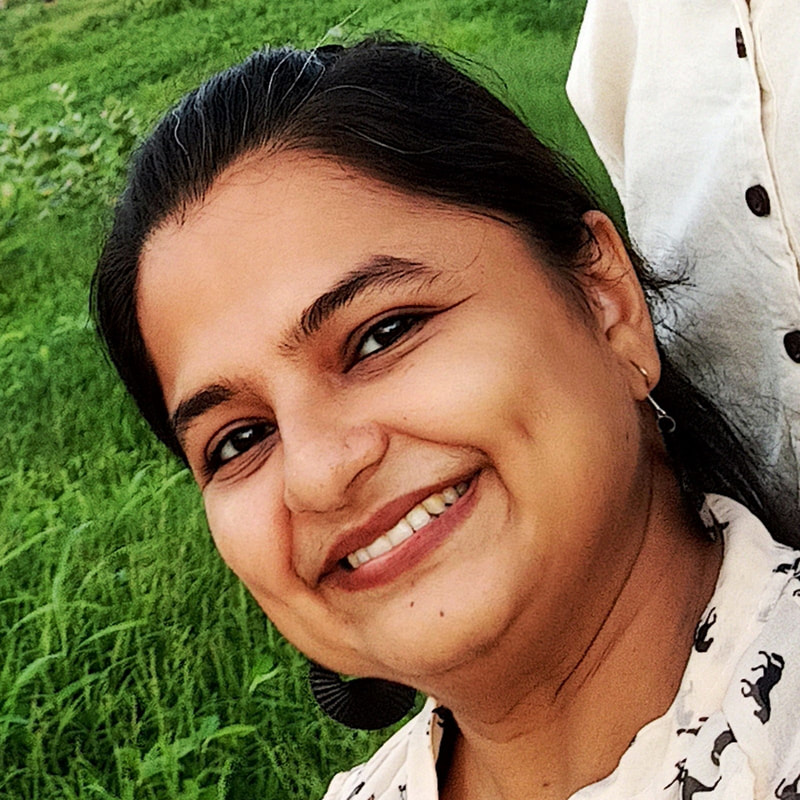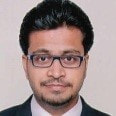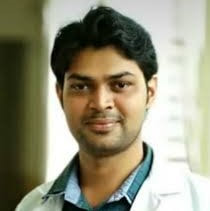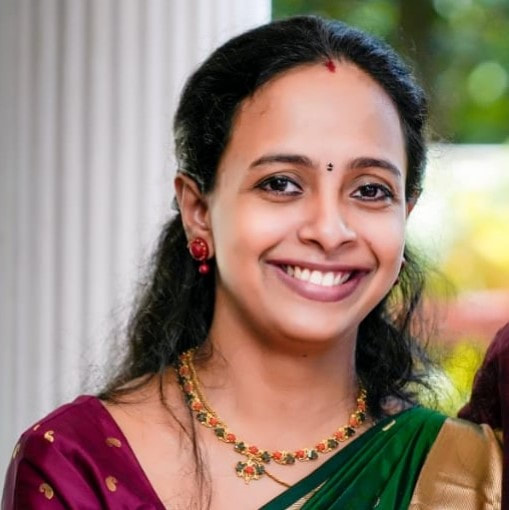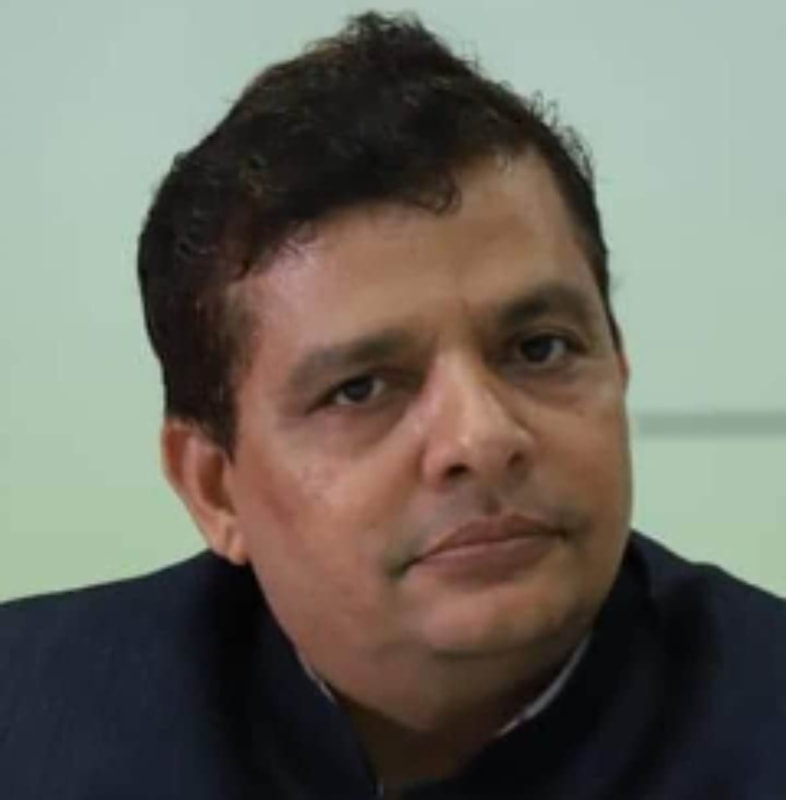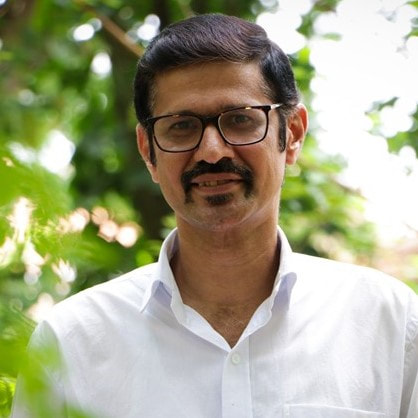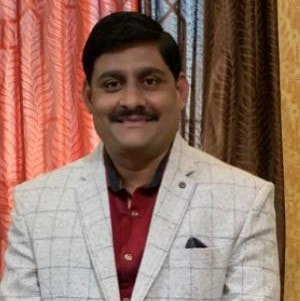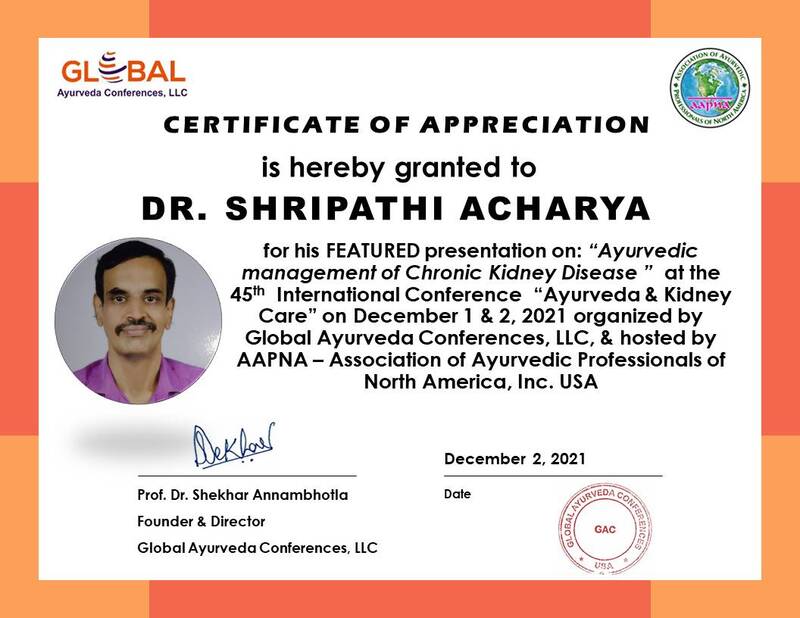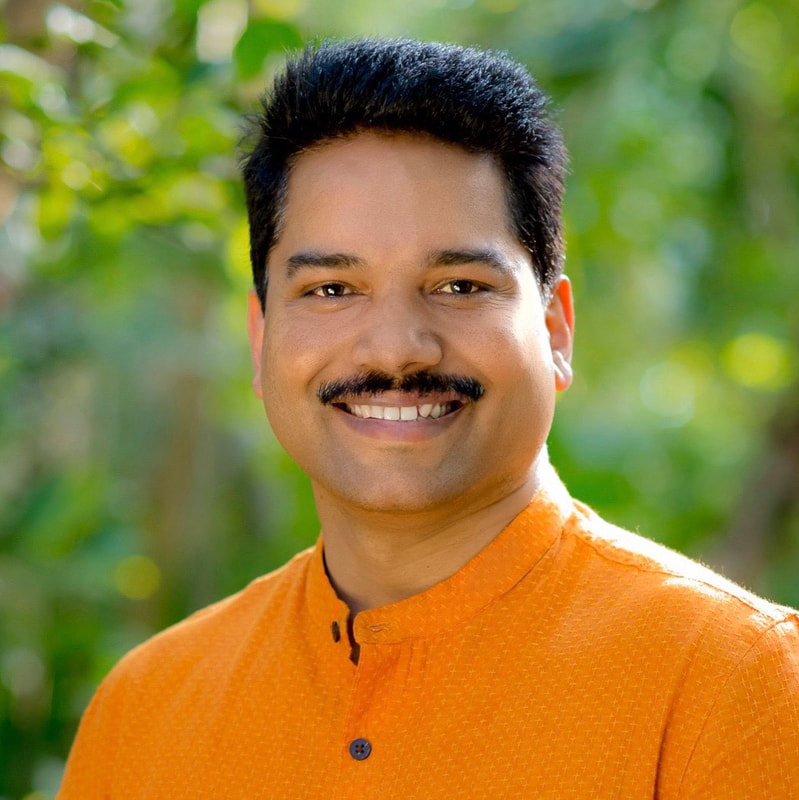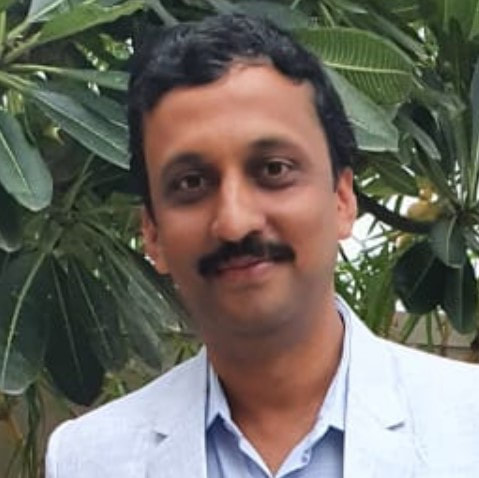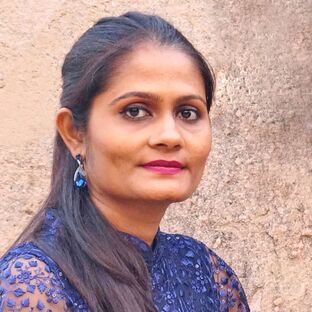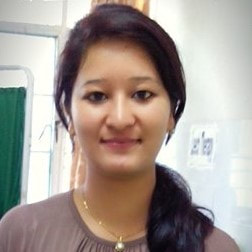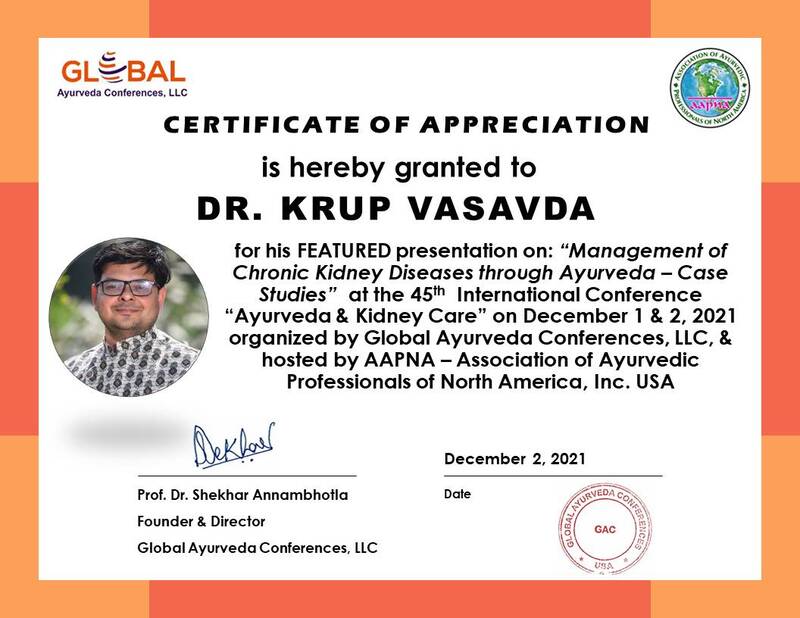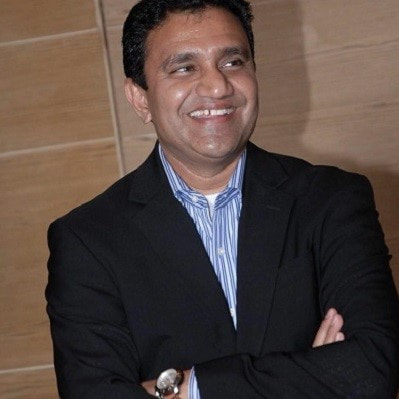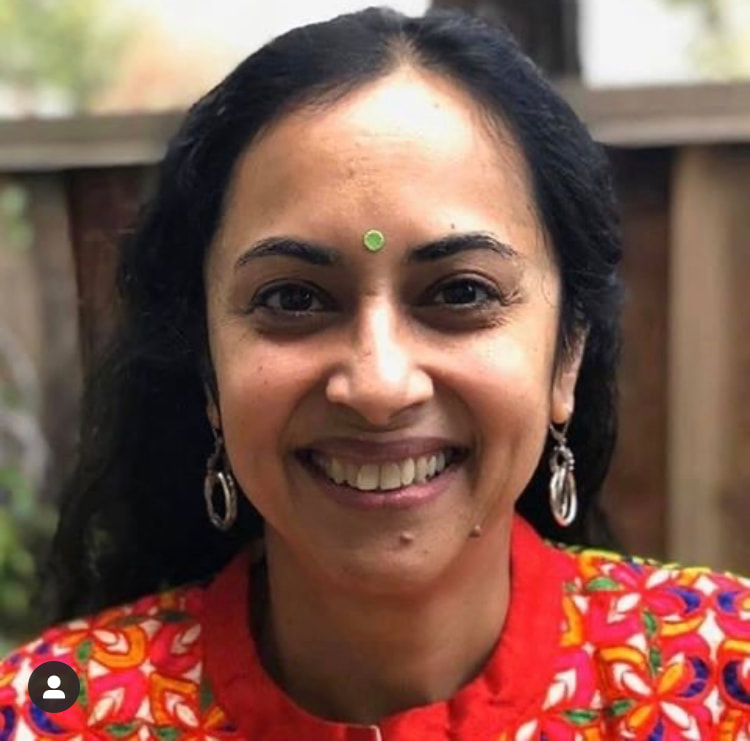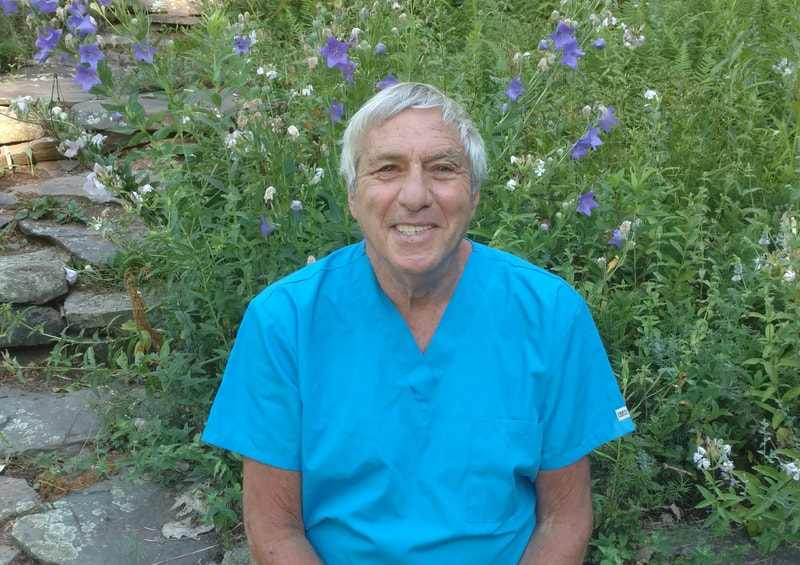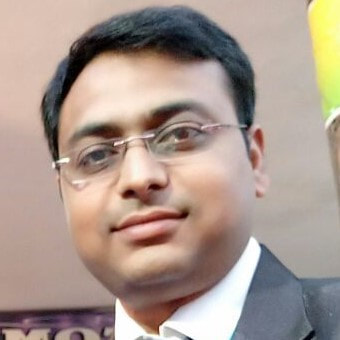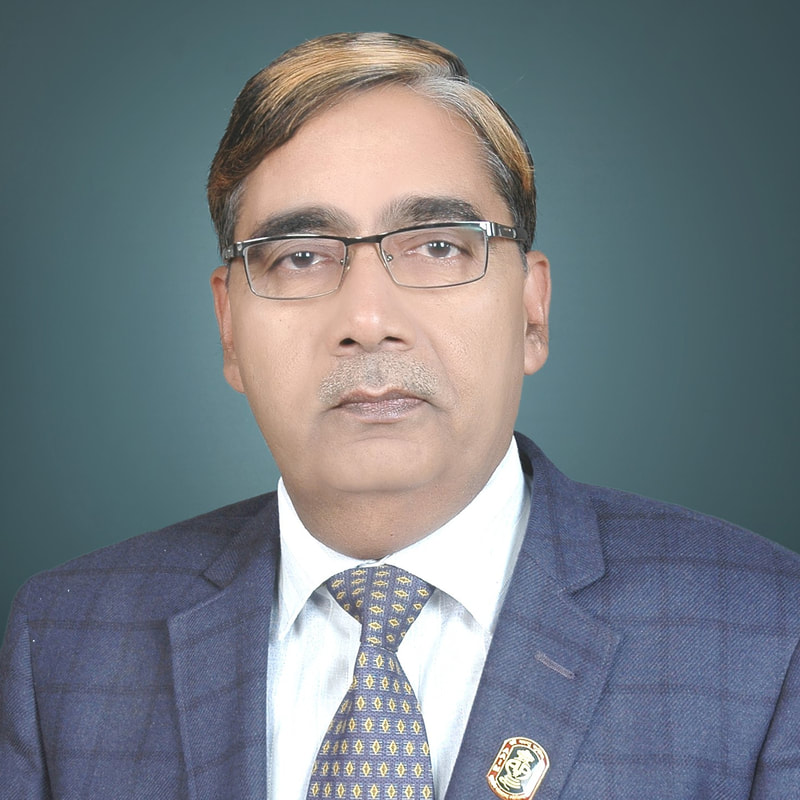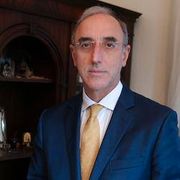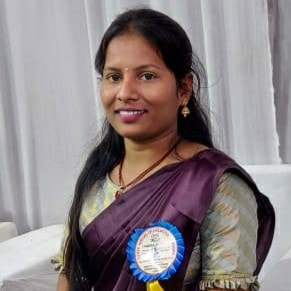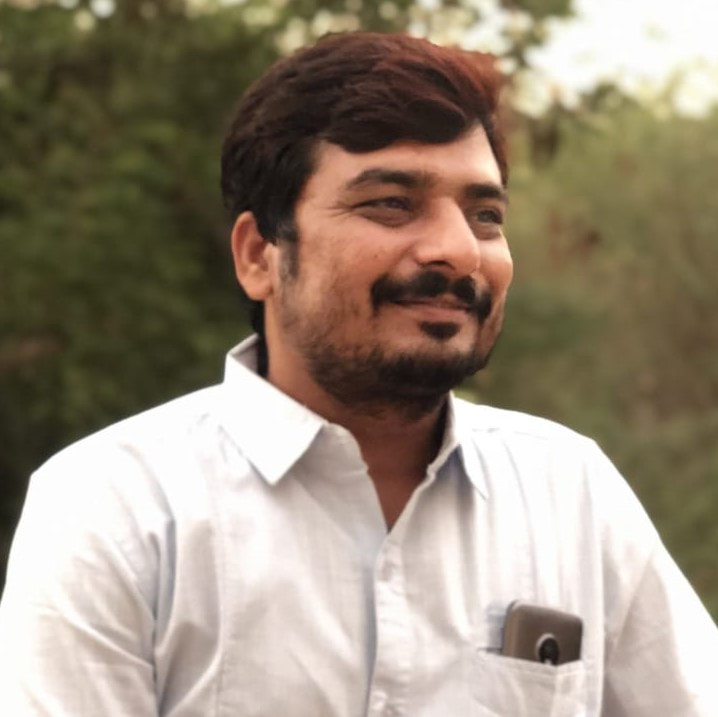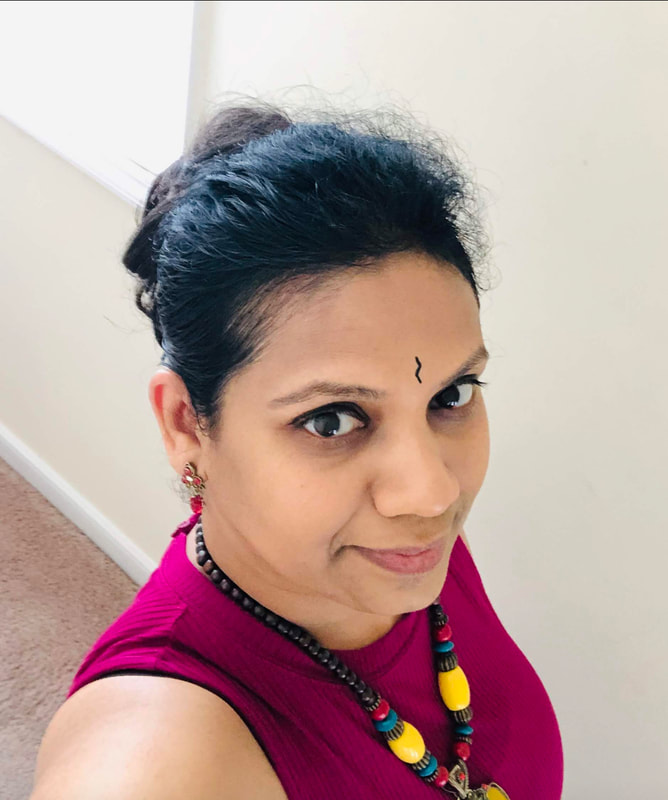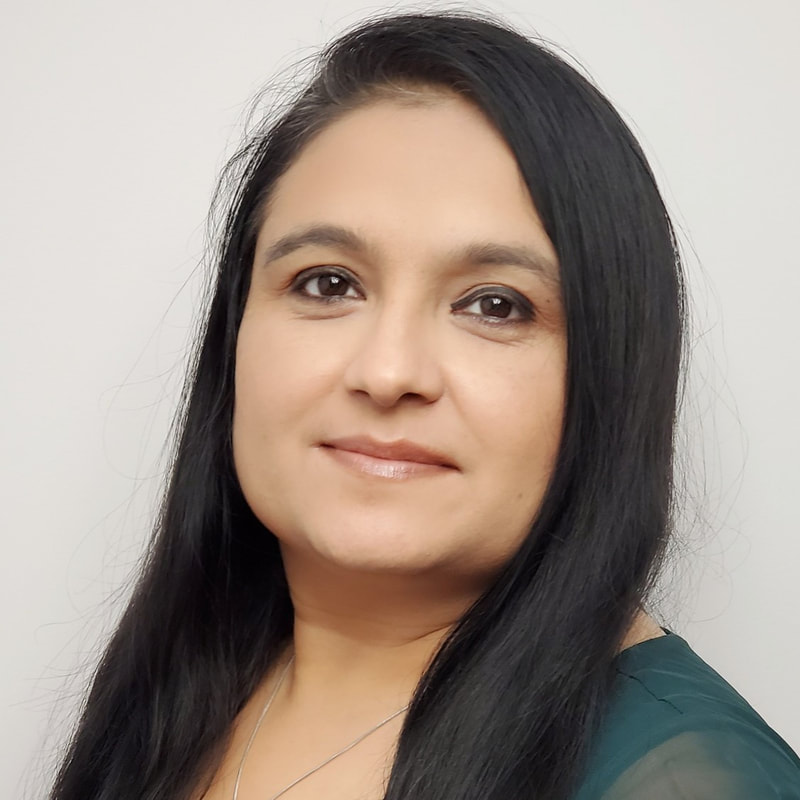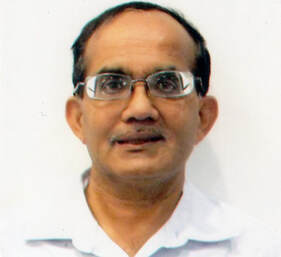About the Conference
16.0 PACE (Professional Ayurvedic Continuing Education) Credits from AAPNA (Association of Ayurvedic Professionals of North America, Inc. USA
- Ayurveda & Pain Management
Featured Speakers
Tentative Conference Schedule
Saturday, December 12, 2020
Conference Time: EST (Eastern Standard Time)
Conference Time: EST (Eastern Standard Time)
TIME |
TOPIC |
SPEAKER |
08:00 AM - 08:30 AM |
A Psychosomatic Approach to the Management of Chronic Pain with Ayurveda |
Dr. Khyati Sud BAMS, MD-Ayu, PhD (Ayu) Gujarat, India |
08:30 AM - 9:30 AM |
A Clinical Impend towards pain management with special reference to Opioid Analgesics |
Dr. Sushant Sud BAMS, MD-Ayu, Gujarat, India |
9:30 AM - 10:30 AM |
Concept of Pain in Ayurveda with its Management |
Dr. Rakeshkumar S Gujar BAMS, MS-Ayu Karnataka, India |
10:30 AM - 11:00 AM |
Pain management through 'Murivenna', - Folklore medicine |
Dr. Amrita M Nandakumar BAMS, MS-Ayu Kerala, India |
11:00 AM - 11:30 AM |
Marma Science with special reference to Pain Management |
Dr Navin Chandra Joshi BAMS, MD-Ayu Uttarakhand, India |
11:30 AM - 12:05 PM |
Pain Management: Mind Over Body |
Dr. Suhas Kumar Shetty BAMS, MD-Ayu, PhD-Ayu Karnataka, India |
12:05 PM - 12:45 PM |
Rheumatoid Arthritis (Amavata) Management in Ayurveda |
Dr. Bhairav Kulkarni BAMS, MD-Ayu, FAAPNA Maharashtra, India |
12:45 PM - 01:30 PM |
Pain Management without drugs - Ayurvedic Perspective |
Dr. Nagabhushan Moolky, PhD, CNS, Illinois, USA |
01:30 PM - 02:10 PM |
Role of Ayurveda in the management of Osteoarthritis of the knee joint |
Dr. Shripathi Acharya BAMS, MD-Ayu, PhD-Ayu Karnataka, India |
02:10 PM - 03:05 PM |
Pain Management in Ayurveda Through Shodhana and Shamana Therapies |
Dr. Jayarajan Kodikannath BSc., BAMS California, USA |
03:05 PM - 03:30 PM |
Importance of Upakrama in the management of Pain |
Dr. B.A.Lohith, BAMS, MD-Ayu, PhD-Ayu, Karnataka, India |
03:30 PM - 04:00 PM |
Pain Management in Primary Dysmenorrhea: A Multi Model Clinical Approach |
Dr. Vaishali Vasavda, BAMS, MS-Ayu, Gujarat, India |
Sunday, December 13, 2020
Conference Time: EST (Eastern Standard Time)
Conference Time: EST (Eastern Standard Time)
TIME |
TOPIC |
SPEAKER |
08:00 AM - 08:45 AM |
Management of Plantar Fasciitis |
Dr. Andhrika Kondeti, BAMS, LMT, RYT, RAD, MH Virginia, USA |
08:45 AM - 09:30 AM |
Pain management through Ayurvedic Herbal Formulations with current evidences |
Dr. Rinky Thakur, BAMS, MD-Ayu, Karnataka, India |
09:30 AM - 10:15 AM |
Pain Management of Sciatic through Ayurveda - A multi model clinical approach |
Dr. Krup Vasavda, BAMS, MD-Ayu, Gujarat, India |
10:15 AM - 11:00 AM |
Management of side effects, including pain during Chemo and Radio therapy |
Dr. Sarat Addanki, AyD, California, USA |
11:00 PM - 11:45 AM |
Ayurveda and Lower Back Pain |
Anuradha Gupta, CAP, MBA, California, USA |
11:45 AM - 12:30 PM |
Pain Management for TMJ and Other Dental Disorders |
Dr. Victor Zeines, DDS, New York, USA |
12:30 PM - 01:15 PM |
The role of Ayurveda in Migraine |
Dr. Gaurav Sawarkar, BAMS, MD-Ayu, Maharashtra, India |
01:15 PM - 02:00 PM |
Cancer Pain Management - Challenges and Perspective in Ayurveda |
Dr. Kuldeep Pandey BSc, BAMS, MD-Ayu, PhD-Ayu Uttar Pradesh, India |
03:00 PM - 02:45 PM |
Thermal Microcautery (TMC) or Agni Karma in pain management |
Dr. Nikolaos Kostopoulos, MD Athens, Greece |
02:45 PM - 03:30 PM |
Dysmenorrhea and it's management through Ayurveda |
Dr. Ashwini Honagannavar, BAMS, MD-Ayu, Karnataka, India |
03:30 PM - 04:15 PM |
Post operative pain management in a Hemorrhoidectomy case with Matra Basti (enema with medicated oil) |
Dr. Shivanand Kembhavi, BAMS, MS-Ayu, Karnataka, India |
04:15 PM - 05:00 PM |
Neuropathic Pains in Ayurveda |
Dr. Sandeep Kaur Mangat BAMS, MD-Ayu Manitoba, Canada |
05:00 PM - 05:45 PM |
Healing Psychological Trauma: Self in Ayurveda |
Amandeep (Annu) Gaidhu, MA, RAP, RAYT, Toronto, Canada |
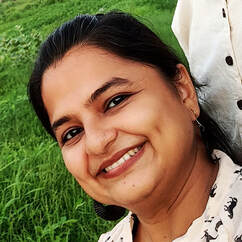
Dr. Khyati Sud, BAMS, MD-Ayu, PhD-Ayu, Gujarat, India - An Ayurvedic scholar, working as Associate Professor in the Department of Kayachikitsa at Dhanwantari Ayurved College Koyadam, Dist- Mahisagar, Tal- Virpur, Affliated to Gujarat Ayurved University. Having Professional experience of more than 8 years in the field of Manas Roga Evum Manovignan (Ayurved Psychiatry).
Education: Under graduation from Shri Gulabkunverba Ayurved Mahavidyala, Gujarat Ayurved University, Jamnagar, Post graduation: IPGT&RA, Gujarat Ayurved University, Jamnagar in Manas Roga Evum Manovignan
• Ph.D: IPGT&RA, Gujarat Ayurved University, Jamnagar in Manas Roga Evum Manovignan, Presently working as Asso. Professor in the Department of Kayachikitsa at Murlidhar Ayurved College, Kalipat, Rajkot. Previously worked as Associate Professor in the Department of Kayachikitsa at Dhanwantari Ayurved College Koyadam, Dist- Mahisagar, Tal- Virpur, Affiliated to Gujarat Ayurved University, Jamnagar, previously worked as Asstistant Professor in the Department. of Kayachiktsa (Medicines) at Shri Gulabkunverba Ayurved Mahavidyalaya, Gujarat Ayurved University, Jamnagar from 2011-2017, Associate Ayurvedic Clinical Specialist at Dr. M.A.Santwani Health Care Center, Jamnagar, Gujarat. Experiences: Teaching: More than 9 Years UG Teaching in the concerned subject., Associate Editor in Journal of Natural & Ayurvedic Medicine (JONAM). Publications / Presentations: More than 20 papers published in different peer-reviewed international journals, Around 5 articles published in peer-reviewed international magazines, More than 14 Presentations done at international and national levels seminars/conferences. Additional Information: Peer Reviewer for (Pharma Ayurved) Journal for Research in Pharmacy and Ayurved, International Journal of Ayurveda, Organized number of events as Jt. Secretary and Coordinator at various platforms, Felicitated by IMA-Jamnagar for performing exceedingly well in the educational carrier for the year 2009, Received Best Paper Certificates in: Sambhasha-2017, International Conference on the scope and management of Diabetes Mellitus (Madhumeha) at NIA, 5th -7th February 2017, Jaipur on the topic “The Impact of Psychosocial factors in the aetio-pathogenesis of Diabetes mellitus (Madhumeha)”, National seminar at Shri Gulabkunverba Ayurved College, Gujarat Ayurved University, 1st-3rd July 2016 on the topic “A Clinical Study to evaluate the efficacy of Saraswatarishta in the management of depression in Menopausal women”, National Conference on Ayurved-Raj-Ayu Con, Rajkot-2009 on the topic “Role of Rasayana in Ageing Women w.s.r to Menopausal Syndrome.”
Topic: A Psychosomatic Approach to the Management of Chronic Pain with Ayurveda
Abstract: Chronic Pain is a multi-factorial public health issue and is most commonly described as pain from an injury or illness that lasts longer than the expected time frame. The current drug-based medicine is developing special designer medications to treat these conditions, though such powerful drugs are also problematical and involve many side effects. Hence the need for an integrative model of management that includes mind-body techniques to encourage patients to deal with multiple forms of chronic pain has emerged to promote long-lasting health. Ayurveda follows a three-fold treatment procedure for any disorder namely Satwaavajay, Daivavyapashraya and Yuktivyapashraya chikitsa which deals with mind, spirit and body respectively which makes it a holistic system of medicine that offers an integrative healing approach to find therapies that match each patient’s pain profile because of bio-individuality. Ayurveda can be especially helpful when pain exists in the setting of co-morbidity such as anxiety and insomnia, which require a more comprehensive approach. Ayurveda suggests a different approach to pain relief which begins by viewing pain as a mind-body experience that is highly subjective. Ayurveda recognizes the power of the mind to relieve pain, and strengthens this force through meditation practices and positive ideation. Approaching pain from a mind-body-spirit approach gives a person the best chance of maximizing their potential to relieve or
even end chronic pain leading to reverberation of their lives.
Education: Under graduation from Shri Gulabkunverba Ayurved Mahavidyala, Gujarat Ayurved University, Jamnagar, Post graduation: IPGT&RA, Gujarat Ayurved University, Jamnagar in Manas Roga Evum Manovignan
• Ph.D: IPGT&RA, Gujarat Ayurved University, Jamnagar in Manas Roga Evum Manovignan, Presently working as Asso. Professor in the Department of Kayachikitsa at Murlidhar Ayurved College, Kalipat, Rajkot. Previously worked as Associate Professor in the Department of Kayachikitsa at Dhanwantari Ayurved College Koyadam, Dist- Mahisagar, Tal- Virpur, Affiliated to Gujarat Ayurved University, Jamnagar, previously worked as Asstistant Professor in the Department. of Kayachiktsa (Medicines) at Shri Gulabkunverba Ayurved Mahavidyalaya, Gujarat Ayurved University, Jamnagar from 2011-2017, Associate Ayurvedic Clinical Specialist at Dr. M.A.Santwani Health Care Center, Jamnagar, Gujarat. Experiences: Teaching: More than 9 Years UG Teaching in the concerned subject., Associate Editor in Journal of Natural & Ayurvedic Medicine (JONAM). Publications / Presentations: More than 20 papers published in different peer-reviewed international journals, Around 5 articles published in peer-reviewed international magazines, More than 14 Presentations done at international and national levels seminars/conferences. Additional Information: Peer Reviewer for (Pharma Ayurved) Journal for Research in Pharmacy and Ayurved, International Journal of Ayurveda, Organized number of events as Jt. Secretary and Coordinator at various platforms, Felicitated by IMA-Jamnagar for performing exceedingly well in the educational carrier for the year 2009, Received Best Paper Certificates in: Sambhasha-2017, International Conference on the scope and management of Diabetes Mellitus (Madhumeha) at NIA, 5th -7th February 2017, Jaipur on the topic “The Impact of Psychosocial factors in the aetio-pathogenesis of Diabetes mellitus (Madhumeha)”, National seminar at Shri Gulabkunverba Ayurved College, Gujarat Ayurved University, 1st-3rd July 2016 on the topic “A Clinical Study to evaluate the efficacy of Saraswatarishta in the management of depression in Menopausal women”, National Conference on Ayurved-Raj-Ayu Con, Rajkot-2009 on the topic “Role of Rasayana in Ageing Women w.s.r to Menopausal Syndrome.”
Topic: A Psychosomatic Approach to the Management of Chronic Pain with Ayurveda
Abstract: Chronic Pain is a multi-factorial public health issue and is most commonly described as pain from an injury or illness that lasts longer than the expected time frame. The current drug-based medicine is developing special designer medications to treat these conditions, though such powerful drugs are also problematical and involve many side effects. Hence the need for an integrative model of management that includes mind-body techniques to encourage patients to deal with multiple forms of chronic pain has emerged to promote long-lasting health. Ayurveda follows a three-fold treatment procedure for any disorder namely Satwaavajay, Daivavyapashraya and Yuktivyapashraya chikitsa which deals with mind, spirit and body respectively which makes it a holistic system of medicine that offers an integrative healing approach to find therapies that match each patient’s pain profile because of bio-individuality. Ayurveda can be especially helpful when pain exists in the setting of co-morbidity such as anxiety and insomnia, which require a more comprehensive approach. Ayurveda suggests a different approach to pain relief which begins by viewing pain as a mind-body experience that is highly subjective. Ayurveda recognizes the power of the mind to relieve pain, and strengthens this force through meditation practices and positive ideation. Approaching pain from a mind-body-spirit approach gives a person the best chance of maximizing their potential to relieve or
even end chronic pain leading to reverberation of their lives.
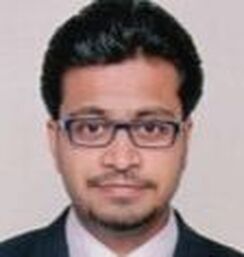
Dr. Sushant Sud, BAMS, MD-Ayu, Gujarat, India - Completed his Graduation from Shri Gulabkunverba Ayurved Mahavidyalaya-Gujarat Ayurved University, Jamnagar & Post Graduate in Rasa Shastra from SDM College of Ayurved, Udupi-RGUHS Bangalore. Diploma holder in Hospital management from National Institute of Health & Family Welfare, New Delhi and certified Health safety consultant from Indian Institute of Public Health Gandhinagar, Gujarat. Presently working as Head & Asso. Professor in the Department of Agad Tantra Vyavahar Ayurved (Toxicology and Jurisprudence) at Shri Gulabkunverba Ayurved Mahavidyalaya, Gujarat Ayurved University, Jamnagar, having Professional experience of more than 10 years.
Experiences: Teaching: More than 10 Years UG Teaching in the subject of Agad Tantra. Co-Principle investigator in 2 projects funded by Ministry of AYUSH, GOI, New Delhi. Publications / Presentations: Resource person/panelist in many International seminars-conferences and webinars, Conducted many Guest speeches on “Lifestyle modifications and preventions” for DCC Sikka, TCL Mithapur, Essar Oil Refinery, MPIYNER, Sashastra Seema Bala, KD Ambani Vidyamandir, Jamnagar. More than 40 papers published in different peer reviewed international journals and conference proceedings. Around 5 articles published in peer reviewed international magazines. Author of 3 books on Ayurved. More than 20 Presentations done at international and national levels seminars/conferences.
Additional Information: Felicitated by the Lions Club of Jamnagar (East) for the Ayurvedic health services and amenities towards the society, August, 2019. Felicitated with Bharat Vikas Award for the Loyalty, Diligence & Outstanding Performance in the field of Ayurveda Aushadha Nirmaan Shastra in the National Seminar on “Diversity of Cultural & Environment” in Bhubaneswar on 19th Nov 2017 on the occasion of “Citizen’s Day.” Editorial Member and Peer Reviewer of many International Journals
Topic: A Clinical Impend towards pain management with special reference to Opioid Analgesics
Abstract: Pain affects hundreds of millions of Indians every year; in fact, pain is a normal part of life. In today’s era musculoskeletal and neuromuscular pain like the pain of arthritis, sciatica, lumbar spondylosis, migraine, etc are very common. The experience of pain exists on a spectrum from severely disabling to manageable without any intervention. Pain can be acute and self-limited or chronic and incurable. Pain is a cardinal symptom attributed to Vata humor or dosha. When the momentum of vata is obstructed, vata gets vitiated. The momentum of vata is obstructed by its subtypes or dhatus or malas. Obstructed vata moves in a reverse direction, but, obstructed again and gets enveloped. This process is known as ‘avarana’ and is also responsible for vitiation of vata. Analgesic is a drug which relieve pain without causing loss of consciousness and Opioid analgesic are naturally occurring semi-synthetic or synthetic drugs which have an action of relief of pain and depression of CNS. Narcotic analgesic was the old term used for opioid analgesics. It is increasingly clear that to manage pain adequately and safely, the clinician must dedicate substantial time and energy to the patient, and the patient needs to be actively engaged. Prescribing opioids is not and should not be simple, intense monitoring, informed consent and patient education are required. However, a paradigm shift in practice regarding not just opioids but pain treatment, in general, can be instrumental in improving the health of our individual patients and the population.
Experiences: Teaching: More than 10 Years UG Teaching in the subject of Agad Tantra. Co-Principle investigator in 2 projects funded by Ministry of AYUSH, GOI, New Delhi. Publications / Presentations: Resource person/panelist in many International seminars-conferences and webinars, Conducted many Guest speeches on “Lifestyle modifications and preventions” for DCC Sikka, TCL Mithapur, Essar Oil Refinery, MPIYNER, Sashastra Seema Bala, KD Ambani Vidyamandir, Jamnagar. More than 40 papers published in different peer reviewed international journals and conference proceedings. Around 5 articles published in peer reviewed international magazines. Author of 3 books on Ayurved. More than 20 Presentations done at international and national levels seminars/conferences.
Additional Information: Felicitated by the Lions Club of Jamnagar (East) for the Ayurvedic health services and amenities towards the society, August, 2019. Felicitated with Bharat Vikas Award for the Loyalty, Diligence & Outstanding Performance in the field of Ayurveda Aushadha Nirmaan Shastra in the National Seminar on “Diversity of Cultural & Environment” in Bhubaneswar on 19th Nov 2017 on the occasion of “Citizen’s Day.” Editorial Member and Peer Reviewer of many International Journals
Topic: A Clinical Impend towards pain management with special reference to Opioid Analgesics
Abstract: Pain affects hundreds of millions of Indians every year; in fact, pain is a normal part of life. In today’s era musculoskeletal and neuromuscular pain like the pain of arthritis, sciatica, lumbar spondylosis, migraine, etc are very common. The experience of pain exists on a spectrum from severely disabling to manageable without any intervention. Pain can be acute and self-limited or chronic and incurable. Pain is a cardinal symptom attributed to Vata humor or dosha. When the momentum of vata is obstructed, vata gets vitiated. The momentum of vata is obstructed by its subtypes or dhatus or malas. Obstructed vata moves in a reverse direction, but, obstructed again and gets enveloped. This process is known as ‘avarana’ and is also responsible for vitiation of vata. Analgesic is a drug which relieve pain without causing loss of consciousness and Opioid analgesic are naturally occurring semi-synthetic or synthetic drugs which have an action of relief of pain and depression of CNS. Narcotic analgesic was the old term used for opioid analgesics. It is increasingly clear that to manage pain adequately and safely, the clinician must dedicate substantial time and energy to the patient, and the patient needs to be actively engaged. Prescribing opioids is not and should not be simple, intense monitoring, informed consent and patient education are required. However, a paradigm shift in practice regarding not just opioids but pain treatment, in general, can be instrumental in improving the health of our individual patients and the population.
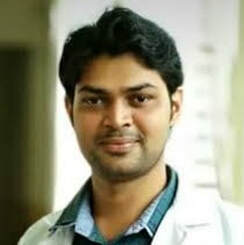
Dr. Rakesh Kumar Gujar, BAMS, MS-Ayu, Karnataka, India - B.A.M.S (Bachelor of Ayurvedic Medicine & Surgery) from BLDEA’S AVS Ayurveda Mahavidyalaya, Aided Medical College & P.G center, affiliated to Rajiv Gandhi University of Health Science, in 2013. M.S. (Master of Surgery) from Govt. Ayurveda Medical College, Bengaluru, affiliated to Rajiv Gandhi University of Health Science, in 2017. PhD Scholar at SJGCHS’s Ayurvedic Medical College, Ghataprabha, affiliated to Rajiv Gandhi University of Health Science, since 2019. MSc. Clinical Nutrition and Dietetics, III semister student at KSOU, Mysuru, since 2018. Academic Excellence: Published 5 research articles in indexed journals., Ongoing Research on Arsha (Haemorrhoids), as a part of PhD studies at RGUHS., Ongoing Research on Guda Bhramsha (Partial Rectal Prolapse) at BLDEA’S Shri B.M.Patil Medical College Hospital And Research Center, Vijayapura, Presented the scientific papers in many national, International seminars and workshops. Given many Guest Lectures on Awareness of Ayurveda with special emphasis on Ayurvedic Surgeries.
Topic: Concept of Pain in Ayurveda with its Management
Abstract: Pain is the most important symptom which brings the patients to the doctor. Pain of different kinds and different nature with different associated features. Concept of pain in Ayurveda is completely a different one. The pain in Ayurveda is mainly associated with the vitiation of of Vata dosha which can be associated with the other doses like Pitta and Kapha. The burning sensation which is there in the patients can be because of pitta dosha but the pain or the sensation of pain is mainly because of Vata dosha. Heaviness in the body or malaise might be because of kapha dosha. Hence the need of hour is the correlation between the concept of pain in modern science and Ayurveda. The pathophysiology of the pain in Ayurveda and Modern Science will be a new area of interest for the young research scholars. Hence here in this study we will be coming to know about the concept of pain and its management through the different modalities of treatment in Ayurveda.
Topic: Concept of Pain in Ayurveda with its Management
Abstract: Pain is the most important symptom which brings the patients to the doctor. Pain of different kinds and different nature with different associated features. Concept of pain in Ayurveda is completely a different one. The pain in Ayurveda is mainly associated with the vitiation of of Vata dosha which can be associated with the other doses like Pitta and Kapha. The burning sensation which is there in the patients can be because of pitta dosha but the pain or the sensation of pain is mainly because of Vata dosha. Heaviness in the body or malaise might be because of kapha dosha. Hence the need of hour is the correlation between the concept of pain in modern science and Ayurveda. The pathophysiology of the pain in Ayurveda and Modern Science will be a new area of interest for the young research scholars. Hence here in this study we will be coming to know about the concept of pain and its management through the different modalities of treatment in Ayurveda.
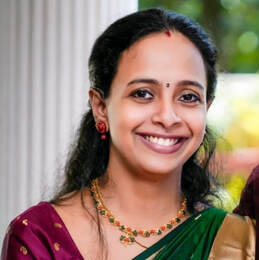
Dr. Amrita M Nandakumar, BAMS, MS-Ayu, Kerala, India - completed my BAMS and MS in Shalya tantra from Amrita Ayurveda college, Amrita Vishwa Vidyapeetham, Kerala. Presently working in Triveni Nursing Home, Trivandrum, Kerala. Triveni Nursing Home is a hospital mainly deals with orthopaedic cases like fractures, dislocations etc. Thus Murivenna is a major medicine used there for all kind of pain treatments.
Topic: Pain management through 'Murivenna', - folklore medicine
Abstract: Murivenna is a formulation used for all inflammatory process like fracture dislocation wound healing etc. It contains 6 swarasa of plants Which posses anti inflammatory principles essential for healing and pain and management
Topic: Pain management through 'Murivenna', - folklore medicine
Abstract: Murivenna is a formulation used for all inflammatory process like fracture dislocation wound healing etc. It contains 6 swarasa of plants Which posses anti inflammatory principles essential for healing and pain and management
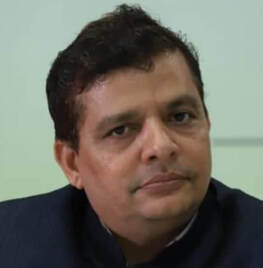
Dr. Navin Chandra Joshi, BAMS, MD-Ayu, Uttarakhand, India - working from last 25 years in the field of Ayurveda.I am Govt Master Trainer of Marms chikitsa .I am working as an Associate professor in Uttarakhand Ayurved University,Harrawala, Dehradun.I am editor and Founder of Ayush Darpan Journal and web portal.
Topic: Marma Science with special reference to Pain Management
Abstract: Pain is alarm or signal of Inflammation going on the body.Their are several way for managing this and Ayurveda has also the potential to manage instant pain.In the proposed conference I will discuss How Ayurveda can be efficiently manage the pain in special reference to marma chikitsa.
Topic: Marma Science with special reference to Pain Management
Abstract: Pain is alarm or signal of Inflammation going on the body.Their are several way for managing this and Ayurveda has also the potential to manage instant pain.In the proposed conference I will discuss How Ayurveda can be efficiently manage the pain in special reference to marma chikitsa.
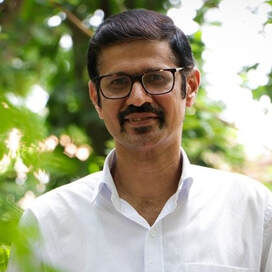
Dr. Suhas Kumar Shetty, BAMS, MD-Ayu, PhD-Ayu, Karnataka, India - is an Ayurveda practitioner, teacher & researcher who is specialized in Mental health, research methodology and medical statistics with experience of over 16 yrs. Currently holding a post of Professor & Head, Dept. of Mano Vijnana Avum Manasa Roga (Ayurveda Psychiatry) and Dean (Research & Development) at Sri Dharmasthala Manjunatheshwara (SDM) College of Ayurveda and Hospital, Hassan, India, is an international invited speaker in various conferences and workshop across the globe and attracts health seekers from USA, England, Scotland, South Africa, Srilanka, various parts of India etc. He is specialized in Mental health care Consultation, Clinical Research, Research methodology & Medical Statistics workshops, Examination & work place stress management workshops, Scholastic performance enhancement programs, Healthy parenting talks, Adolescent education programs, Quantum energy medicine, invited talks on yoga, meditation etc
Topic: Pain Management: Mind Over Body
Abstract: Pain in any form or region is not restricted to body. Body & mind are always interrelated in health, disease and healing. Psychogenic pain is physical pain that is caused, increased, or prolonged by mental, emotional, or behavioral factors. Headache, back pain, or stomach pain are some of the most common types of psychogenic pain Medicine refers also to psychogenic pain or psychalgia as a form of chronic pain under the name of persistent somatoform pain disorder or functional pain syndrome. Causes may be linked to stress, unexpressed emotional conflicts, psychosocial problems, or various mental disorders. In fact, some believe that psychogenic chronic pain exists as a protective distraction to keep dangerous repressed emotions such as anger or rage unconscious The mind-body connection is a simple concept that the mind plays a role in producing the perception of pain, and in promoting healing. Ayurveda strongly believes in holistic understanding of any illness. Aetiology, symptomology and management of pain should be comprehensive addressing factors related to body and mind like food, lifestyle & psychological measures. A description of mind-body connection and pain management methods and an illustrative case study will be provided based on principles of Ayurveda
Topic: Pain Management: Mind Over Body
Abstract: Pain in any form or region is not restricted to body. Body & mind are always interrelated in health, disease and healing. Psychogenic pain is physical pain that is caused, increased, or prolonged by mental, emotional, or behavioral factors. Headache, back pain, or stomach pain are some of the most common types of psychogenic pain Medicine refers also to psychogenic pain or psychalgia as a form of chronic pain under the name of persistent somatoform pain disorder or functional pain syndrome. Causes may be linked to stress, unexpressed emotional conflicts, psychosocial problems, or various mental disorders. In fact, some believe that psychogenic chronic pain exists as a protective distraction to keep dangerous repressed emotions such as anger or rage unconscious The mind-body connection is a simple concept that the mind plays a role in producing the perception of pain, and in promoting healing. Ayurveda strongly believes in holistic understanding of any illness. Aetiology, symptomology and management of pain should be comprehensive addressing factors related to body and mind like food, lifestyle & psychological measures. A description of mind-body connection and pain management methods and an illustrative case study will be provided based on principles of Ayurveda
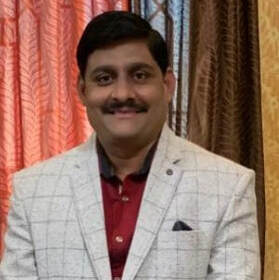
Dr. Bhairav Kulkarni, BAMS, MD-Ayu, FAAPNA, Maharashtra, India - Director & Ayurveda Consultant, Shree Sidhivinayak Ayurved Panchakarma Center, India. Working as Associate Professor, Kayachikitsa Deptt. ARAC, Manchihill, India. He is MD in Kayachikitsa ( Ayurved) from Aurangabad. Fellow of (F.A.A.P.N.A.) Association of Ayurvedic Professional of North America. He has having 9 years teaching experience and is a Post Graduate teacher/guide. He is recognized guide of PG Kayachikitsa of Maharashtra University of Health Sciences, Nashik. He has Member of World Research Council, also Editorial Board member of 6 International Research Index, peer review Journal like Acta Scientific, Medwin Publishers, Journal of Bio Innovation, Auctores Journal, Chebio Publishers, Journal Insight in Chest Disease etc.. He is Member of IAA, Pune Member of AAPNA, North America, Member of CAMA, Morga, CA, Member of World Yoga & Ayurveda, Europe, Member of Yoga International, Pennsylvania, Member of IASTAM, Member of Ayurveda organizations in Asia and Europe. He had previous work in many International Conferences as OCM, Key Note Speaker, Session Chair, Organiser, Presenter in India and Outside India. He had invitee for Ayurveda promotion and conferences, workshop in Srilanka, Dubai, Thailand, Cambodia, Malaysia, Nepal, China, Indonesia, Spain, recently invited at AMAYUR, Portugal. He had worked as International Speaker given online lectures in many countries in past. He had awarded 9 National like Dhanwantari Award like this and 1 International Award for excellent work in Ayurveda field. Also he had felicitated by hands of Honorable Governor of Andhra Pradesh. He had published more than 20 Research Articles in National & International Journal up till.
Topic: Rheumatoid Arthritis (Amavata) Management in Ayurveda
Abstract: The RA has been described as Amavata in Ayurveda, in which the vitiated Vata and Ama afflicts the lining of the joints, causing Shula (pain) & Shotha (swelling). The treatment module for Amavata includes Shamana (conservative) and Shodhana (biological purification of the body) Chikitsa.
Topic: Rheumatoid Arthritis (Amavata) Management in Ayurveda
Abstract: The RA has been described as Amavata in Ayurveda, in which the vitiated Vata and Ama afflicts the lining of the joints, causing Shula (pain) & Shotha (swelling). The treatment module for Amavata includes Shamana (conservative) and Shodhana (biological purification of the body) Chikitsa.
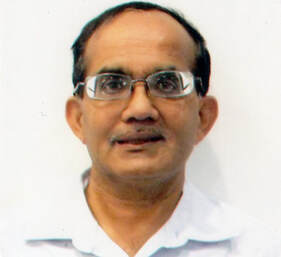
Dr. Nagabhushan Moolky, PhD, CNS, Illinois, USA - a certified nutrition specialist, Health Coach, Scientist & Yoga researcher. He worked as a scientist for the last 35 years. He was a Scientific Officer at Tata Memorial Center Cancer Institute, Bombay, India where he completed his Ph.D. He worked as a scientist in several top notch Universities in USA. He was the first one to show (1984) that some of the spices (its principles) - Turmeric (Curcumin), Ginger (Gingerol, Shaogol and zingerone), Catechu (Catechin) and betel leaf (Hydroxychavicol) prevents genetic damage resulting in cancer formation caused by environmental and dietary chemicals. He is the first one to show (1984) that Turmeric in diet prevents virus-induced spontaneous mammary tumors in mice. His research was recognized by more than 20 awards by national and international organization including Young Scientist Award (Gold Medal), 1988 from Indian Council for Medical Research (ICMR), New Delhi, India and New Investigator Award 1989, American College of Nutrition, USA. He has published his research findings in peer-reviewed national and international scientific journals and also presented more than 150 abstracts in national and international scientific meetings. In 2004, he was invited to present his work at the First International conference on childhood leukemia, London. The presentation was covered by all major news papers and news channels around the world including BBC, CNBC, CBS, ABC news.
Topic: Pain Management without drugs - Ayurvedic Perspectives
Abstract: Pain is the part and parcel of modern human civilization There is a saying “No Pain No Gain”. When the pain makes a person dysfunctional and unable to perform daily routines, then it is a disease, needs medical intervention. Day by day new drugs, new plant products, and stimulators (Biological - Psychological, Electrical, chemical) flooding the market. In ancient times, from the beginning of Ayurveda (8000 BCE during Saraswathi Civilization), the focus was not only free from any kind of diseases and be healthy but also gave prime importance to overall welling throughout life with mastering over one’s own life. That is why prevention was given more importance. They formulated daily rituals, cultural habits, food habits, and social norms for humans to live healthy happy, enlightened human beings. It is considered as fortunate to born as a human being. Ayurveda like other Vedas was transmitted by oral tradition. As the Hindu population declined around the world, change in the education system like establishing universities, the need to write down the information and storing in Libraries began. All the universities were destroyed, and we lost most of the knowledge. According to Ayurveda, diseases, pain, and happiness is the result of balance or imbalance of Tridosha (Vata, Pitta, Kapha) and Panchabhoota (Water, Air, Fire, Ether, Earth). There is a way to correct (Balance) these imbalances without the use of any drugs. The human body has innumerable subtle energy channels (Nadis) networked to eight main energy centers (Chakras). There recognized marma points of Nadi channels. By manipulating these points in different human body surfaces by acupressure, acupunture (with a single-use needle) or oil massage, diseases of the body parts and pain can be eliminated. This medical health science is described in Suchi Veda Chikista (5000 BCE). Suchi Veda Chikista was used alone or with herbal formulations such as turmeric – anti-inflammatory, wound healing, analgesic, Opium - analgesic alkaloid morphine, Camphor – local analgesic, willow bark – salicylic acid, marijuana - cannabinoids, cannabidiol (cannabis incense delivered through the tube), Clove – eugenol, alcohol (Arista, Asava) to reduce pain, tissue injury and inflammation by the Father of Surgery, Sushruta before, during surgical procedures and after surgery. Sushruta is also the Father of Anesthesiology. The Sushruta written details of anesthesia administration before and during different types of surgeries. He also mentions factors that are considered when anesthesia was given to patients such as age (sex, adult, children, baby, body weight), the severity of the disease, and the combination of anesthetic drugs appropriate for each surgery. Salya Tantra (Surgery) was used to remove factors that caused pain and misery of the patient’s body and mind. Acupuncture is the modern version of Suchi Veda (Suchi Chikista), diffused from India to China and other parts of the world. China incorporated these methods into Chinese Traditional Medicine. Nowadays, several disease conditions, including pain may be treated with acupuncture. It is now included for treating nausea and vomiting. Agni Karma (Thermal Microcautery) method using metal rods is described in Sushruta Samhita, is peripheral neuro-stimulation and modulation of pain. Now it is practiced by modern medicine for the treatment of musculoskeletal and joint disorders, chronic pain, burn, and migraine.
Topic: Pain Management without drugs - Ayurvedic Perspectives
Abstract: Pain is the part and parcel of modern human civilization There is a saying “No Pain No Gain”. When the pain makes a person dysfunctional and unable to perform daily routines, then it is a disease, needs medical intervention. Day by day new drugs, new plant products, and stimulators (Biological - Psychological, Electrical, chemical) flooding the market. In ancient times, from the beginning of Ayurveda (8000 BCE during Saraswathi Civilization), the focus was not only free from any kind of diseases and be healthy but also gave prime importance to overall welling throughout life with mastering over one’s own life. That is why prevention was given more importance. They formulated daily rituals, cultural habits, food habits, and social norms for humans to live healthy happy, enlightened human beings. It is considered as fortunate to born as a human being. Ayurveda like other Vedas was transmitted by oral tradition. As the Hindu population declined around the world, change in the education system like establishing universities, the need to write down the information and storing in Libraries began. All the universities were destroyed, and we lost most of the knowledge. According to Ayurveda, diseases, pain, and happiness is the result of balance or imbalance of Tridosha (Vata, Pitta, Kapha) and Panchabhoota (Water, Air, Fire, Ether, Earth). There is a way to correct (Balance) these imbalances without the use of any drugs. The human body has innumerable subtle energy channels (Nadis) networked to eight main energy centers (Chakras). There recognized marma points of Nadi channels. By manipulating these points in different human body surfaces by acupressure, acupunture (with a single-use needle) or oil massage, diseases of the body parts and pain can be eliminated. This medical health science is described in Suchi Veda Chikista (5000 BCE). Suchi Veda Chikista was used alone or with herbal formulations such as turmeric – anti-inflammatory, wound healing, analgesic, Opium - analgesic alkaloid morphine, Camphor – local analgesic, willow bark – salicylic acid, marijuana - cannabinoids, cannabidiol (cannabis incense delivered through the tube), Clove – eugenol, alcohol (Arista, Asava) to reduce pain, tissue injury and inflammation by the Father of Surgery, Sushruta before, during surgical procedures and after surgery. Sushruta is also the Father of Anesthesiology. The Sushruta written details of anesthesia administration before and during different types of surgeries. He also mentions factors that are considered when anesthesia was given to patients such as age (sex, adult, children, baby, body weight), the severity of the disease, and the combination of anesthetic drugs appropriate for each surgery. Salya Tantra (Surgery) was used to remove factors that caused pain and misery of the patient’s body and mind. Acupuncture is the modern version of Suchi Veda (Suchi Chikista), diffused from India to China and other parts of the world. China incorporated these methods into Chinese Traditional Medicine. Nowadays, several disease conditions, including pain may be treated with acupuncture. It is now included for treating nausea and vomiting. Agni Karma (Thermal Microcautery) method using metal rods is described in Sushruta Samhita, is peripheral neuro-stimulation and modulation of pain. Now it is practiced by modern medicine for the treatment of musculoskeletal and joint disorders, chronic pain, burn, and migraine.
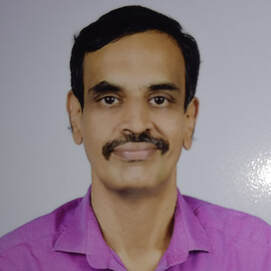
Dr. Shripathi Acharya, BAMS, MD-Ayu, PhD-Ayu, Karnataka, India - is working as Director Academic of Muniyal Institute of Ayurveda Medical sciences Manipal India since 22 years. He had authored 14 books on Ayurveda and more than 150 research and review papers in national and international seminars and journals. He has been awarded with eminent educationist award Bengaluru, Research excellence award Hyderabad, award of academic excellence Mumbai, award of excellence in education New Delhi, Best Ayurveda physician in Ayurveda Nephrology, BHU, Varanasi and Best paper award VTU, Belgaum. India. He had presented papers in Philadelphia, Glasgow, Beijing, Singapore, Italy, Colombo, Dhaka, Chiang Mai, Melbourne, and Hong Kong so far.
Topic: Role of Ayurveda in the management of Osteoarthritis of the knee joint
Abstract: Osteoarthritis of the knee joint is a common degenerative disease of the knee joint seen in global population. The disease is characterized by pain and swelling of the knee joint with restriction of movement. On chronic course, there will be genu vera or genu vulgus with crippling. Ayurveda medicine has positive role in the management of this disease. Ayurveda medicines along with panchakarma treatment, Pathya apathya palana , and diet are followed in this disease. Ayurveda medicines are cost effective, safe and affordable also. In this paper, Role of Ayurveda in the management of Osteoarthritis of the knee joint is discussed.
Topic: Role of Ayurveda in the management of Osteoarthritis of the knee joint
Abstract: Osteoarthritis of the knee joint is a common degenerative disease of the knee joint seen in global population. The disease is characterized by pain and swelling of the knee joint with restriction of movement. On chronic course, there will be genu vera or genu vulgus with crippling. Ayurveda medicine has positive role in the management of this disease. Ayurveda medicines along with panchakarma treatment, Pathya apathya palana , and diet are followed in this disease. Ayurveda medicines are cost effective, safe and affordable also. In this paper, Role of Ayurveda in the management of Osteoarthritis of the knee joint is discussed.
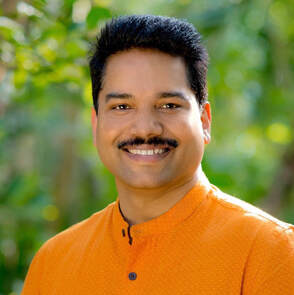
Dr. Jayarajan Kodikannath, BSc., BAMS, California, USA - is a renowned Ayurvedic scholar, clinician, and educator with over two decades of clinical expertise in India and the U.S. He represents a lineage of traditional Ayurvedic Practitioners (Vaidyas) in Kerala, India with extensive knowledge in the ancient root texts of Ayurveda. He is currently the Academy Director and Chief Ayurveda consultant of Kerala Ayurveda USA. He serves on the Board of Directors for the National Ayurvedic Medical Association (NAMA) and California Association of Ayurvedic Medicine (CAAM) and also served as a member of the Expert Curriculum Committee for Masters in Ayurveda at Bastyr University, Seattle. “Dr. J,” as his students call him for short, is a compassionate healer and educator, devoted to the mission of imparting the traditional teachings of Kerala’s Ayurveda.
Topic: Pain Management in Ayurveda Through Shodhana and Shamana Therapies
Abstract: Ayurveda explains pain as an expression of Vata aggravation and there are specific methodologies mentioned to alleviate the pain in various systems. The uniqueness of Ayurvedic pain management is that the remedy varies according to the location of the pain and type of pain. Incorporation of specific Panchakarma and Shamana therapies with specific therapeutic oils and other ingredients found to be very effective in the management of pain. Being an active clinician for more than two decades I would like to bring the clinical experience of managing various types of pains using the shodhana and shamana therapies.
Topic: Pain Management in Ayurveda Through Shodhana and Shamana Therapies
Abstract: Ayurveda explains pain as an expression of Vata aggravation and there are specific methodologies mentioned to alleviate the pain in various systems. The uniqueness of Ayurvedic pain management is that the remedy varies according to the location of the pain and type of pain. Incorporation of specific Panchakarma and Shamana therapies with specific therapeutic oils and other ingredients found to be very effective in the management of pain. Being an active clinician for more than two decades I would like to bring the clinical experience of managing various types of pains using the shodhana and shamana therapies.
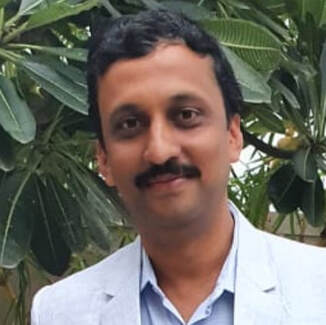
Dr. B.A. Lohith, BAMS, MD-Ayu, PhD-Ayu, Karnataka, India - is a renowned Ayurveda practitioner, teacher & researcher who is specialized in Panchakarma practice in ayurveda with experience of over 13 yrs. Currently holding a post of Association Professor & Professor and Head, Department of panchakarma at prestigious Sri Dharmasthala Manjunatheshwara (SDM) College of Ayurveda and Hospital, Medical director for Sri Raksha Ayurveda, Hassan, Karnataka, India.
He has to his credit one books & more than 42 scientific articles in international peer reviewed journals. He is recipient of various academic awards like fellowship award form international academy of Ayurveda physicians Jamnagar, Ayurveda bhushana award-2012, SDM doctor -2013 on the occasion on doctor day celebration, received excellency award in the year 2014. Bhishak – 2018 best doctor award, best paper presenter award at various seminars and conferences like British Ayurveda accredited practitioners for propagation of Ayurveda and panchakarma at London etc. to mention a few. He is recognized PG & PhD guide at Rajiv Gandhi University of health sciences (RGUHS) Karnataka, Bangalore. He is an member for local inspection committee member Rajiv Gandhi University of health sciences (RGUHS) Karnataka, Bangalore for the various college which are affiliated for university He is an member of board studies for post graduates of Rajiv Gandhi University of health sciences (RGUHS) Karnataka, Bangalore for 2018 -2020
Topic: Importance of Upakrama in the management of Pain
Abstract: The word upakrama in Ayurvedic classics refers to planning a line of treatment and executing it for the betterment of the diseased. The mode of treatment in Ayurveda is classified into three types namely yuktivyapashraya, daivavyapashraya and satvavajaya. The upakramas can be considered as a part of yuktivyapashraya chikitsa, in spite of recent advances in pain management, it still remains challenged. In general pain is described as uncomfortable sensations in the body which stems from activation of the nervous system. It is hence important to get rid of the pain. The International Association for the Study of Pain advocates that the relief of pain should be recognized as human right, that chronic pain should be considered as a disease. Various methods of treatment offered in Ayurveda gives immediate pain relief without much untoward effect. Here an attempt is made to explore the concepts of pain management through different modalities.
He has to his credit one books & more than 42 scientific articles in international peer reviewed journals. He is recipient of various academic awards like fellowship award form international academy of Ayurveda physicians Jamnagar, Ayurveda bhushana award-2012, SDM doctor -2013 on the occasion on doctor day celebration, received excellency award in the year 2014. Bhishak – 2018 best doctor award, best paper presenter award at various seminars and conferences like British Ayurveda accredited practitioners for propagation of Ayurveda and panchakarma at London etc. to mention a few. He is recognized PG & PhD guide at Rajiv Gandhi University of health sciences (RGUHS) Karnataka, Bangalore. He is an member for local inspection committee member Rajiv Gandhi University of health sciences (RGUHS) Karnataka, Bangalore for the various college which are affiliated for university He is an member of board studies for post graduates of Rajiv Gandhi University of health sciences (RGUHS) Karnataka, Bangalore for 2018 -2020
Topic: Importance of Upakrama in the management of Pain
Abstract: The word upakrama in Ayurvedic classics refers to planning a line of treatment and executing it for the betterment of the diseased. The mode of treatment in Ayurveda is classified into three types namely yuktivyapashraya, daivavyapashraya and satvavajaya. The upakramas can be considered as a part of yuktivyapashraya chikitsa, in spite of recent advances in pain management, it still remains challenged. In general pain is described as uncomfortable sensations in the body which stems from activation of the nervous system. It is hence important to get rid of the pain. The International Association for the Study of Pain advocates that the relief of pain should be recognized as human right, that chronic pain should be considered as a disease. Various methods of treatment offered in Ayurveda gives immediate pain relief without much untoward effect. Here an attempt is made to explore the concepts of pain management through different modalities.
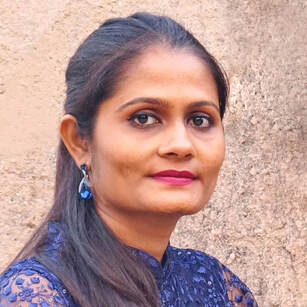
Dr. Vaishali Vasavda, BAMS, MS-Ayu, Gujarat, India - is working as Assistant professor Department of Prasuti Tantra and Stree Roga, J S Ayurveda College, Nadiad, Gujarat, India. Presently she is doing Ph D from Parul University, Vadodara in the same discipline. She is a member in Syllabus Drafting Committee, CCIM, India. She obtained her UG and PG from Sri Kalabyraveshwara Swamy Ayurvedic Medical College and Research Centre, Bangalore, Karnataka, India. Her Subject of Specialization is Prasuti Tantra and Stree Roga. She is practicing Ayurvedic physician and specialty in Ayurvedic management of Gynecological Disorders. Her subject of interest is common gynecological disorders, genetics, and Garbhasamskara. She has an expertise in pain management by various Ayurveda therapies. She has published many papers in national and international peer reviewed journals. Dr. Vaishali Vasavda is a supporting member of AAPNA, USA.
Topic: Pain Management in Primary Dysmenorrhea: A Multi Model Clinical Approach
Abstract: Primary dysmenorrhoea is the most common gynaecological condition among menstruating adolescents and adults. Dysmenorrhoea ensuring discomfort for women’s daily routines and resulting in missing work, college or school, inability to participate in sports or other activities. The main symptom in primary dysmenorrhoea is pain mainly a suprapubic cramping and may be accompanied by lumbosacral ache, pain radiating down the anterior thigh. The prevalence of dysmenorrhoea is 53% in girls in urban areas and 56% in girls in rural areas. In Ayurveda classics dysmenorrhoea can be correlated with Kashta-Artava (Kashta means ‘pain’, Artava means ‘discharge from the vagina’). As per Ayurvedic classics, pain occurred in the any part of the body due to aggravation of Vata dosha. Hence by correction of direction of vayu along with avoidance of causative factors one can treat this condition. Ayurveda recommends different type of treatment modalities like palliative medicines, Panchakarma Procedure like Basti (Enema treatment), different diet modulations and certain yoga practices for management of Primary dysmenorrhoea. Hence the effort was made to evaluate the efficacy of a multi model clinical approach for the curing of primary dysmenorrhoea and pain with relation to it.
Topic: Pain Management in Primary Dysmenorrhea: A Multi Model Clinical Approach
Abstract: Primary dysmenorrhoea is the most common gynaecological condition among menstruating adolescents and adults. Dysmenorrhoea ensuring discomfort for women’s daily routines and resulting in missing work, college or school, inability to participate in sports or other activities. The main symptom in primary dysmenorrhoea is pain mainly a suprapubic cramping and may be accompanied by lumbosacral ache, pain radiating down the anterior thigh. The prevalence of dysmenorrhoea is 53% in girls in urban areas and 56% in girls in rural areas. In Ayurveda classics dysmenorrhoea can be correlated with Kashta-Artava (Kashta means ‘pain’, Artava means ‘discharge from the vagina’). As per Ayurvedic classics, pain occurred in the any part of the body due to aggravation of Vata dosha. Hence by correction of direction of vayu along with avoidance of causative factors one can treat this condition. Ayurveda recommends different type of treatment modalities like palliative medicines, Panchakarma Procedure like Basti (Enema treatment), different diet modulations and certain yoga practices for management of Primary dysmenorrhoea. Hence the effort was made to evaluate the efficacy of a multi model clinical approach for the curing of primary dysmenorrhoea and pain with relation to it.
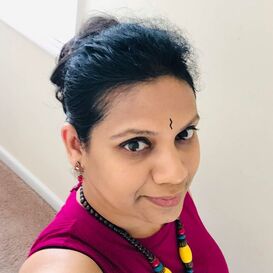
Dr. Andhrika Kondeti, BAMS, RAD, LMT, MH, RYT, Virginia, USA- After she completed her degree program in Ayurveda she had the pleasure of working with several clients in India, US. and from other parts of the world for the past twenty four years! Often times we address disease once it has made itself present in the body. As an Ayurveda practitioner, she offers Ayurveda Consultations and educates people about how to prevent disease and improve their overall quality of life in a natural way. By working with them on eating habits, lifestyle and aligning with the changes of season, a more organic and wholesome lifestyle is achieved. As a licensed Massage therapist, she incorporates Ayurvedic Massage Therapies, shirodhara and Panchakarma therapies in her regular practice. She worked as a Yoga Teacher, training students for Registered Yoga Teacher program at Lotus School of Integrated Professions in Virginia, for over three years. As a Registered Yoga Teacher, she offers group and private sessions based on individual Dosha types. Andhrika is very passionate about the positive effects of Yoga and Ayurvedic Massage therapies on the body, mind and spirit along with diet and lifestyle changes to maintain health, build immunity, prevent disease and promote longevity!
Topic: Management of Plantar Fasciitis
Abstract: Plantar Fasciitis is one of the common causes of foot arch and chronic heel pain. In the United States alone, approximately 2 million Americans suffer from arch or heel pain each year. Heel pain is typically located on the bottom of the heel, and occasionally behind it. It involves inflammation of a thick band of tissue that runs across the bottom of your foot and connects your heel bone to your toes (plantar fascia). The vast majority of people with plantar fasciitis do not require surgery for a full recovery. Ayurvedic diet, lifestyle, herbs, Yoga and Massage therapies can help manage the pain to get back to a healthier and active life.
Topic: Management of Plantar Fasciitis
Abstract: Plantar Fasciitis is one of the common causes of foot arch and chronic heel pain. In the United States alone, approximately 2 million Americans suffer from arch or heel pain each year. Heel pain is typically located on the bottom of the heel, and occasionally behind it. It involves inflammation of a thick band of tissue that runs across the bottom of your foot and connects your heel bone to your toes (plantar fascia). The vast majority of people with plantar fasciitis do not require surgery for a full recovery. Ayurvedic diet, lifestyle, herbs, Yoga and Massage therapies can help manage the pain to get back to a healthier and active life.
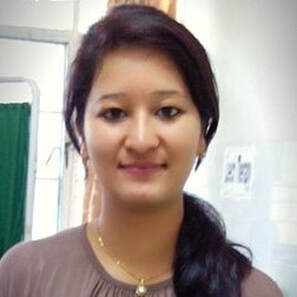
Dr. Rinky Thakur, BAMS, MD-Ayu, Karnataka, India - is a Research Officer at Central Council for Research in Ayurvedic Sciences. Ministry of AYUSH, Govt. of India. She has pursued her Graduation /BAMS from Rajiv Gandhi Govt. Post Graduate Ayurvedic College Paprola, Himachal Pradesh and Post-graduation from the same College in year 2015. Thereafter she worked as Assistant Professor at Vaidya Vagya Dutta Ayurveda College, Khurja, UP for about a year. After than she joined CCRAS as Research Officer under Ministry of AYUSH. By virtue of appointment in CCRAS till now she has more than 10 research papers publication and also presented paper in many International conferences. She has keen interest in clinical, literary and drug research and currently handling projects like Intramural multicentric clinical Research Project, Ayurveda Mobile Health Care Project. Along with that started working on an open label controlled interventional study as a prophylactic measure among population exposed to COVID-19.
Topic: Pain management through Ayurvedic Herbal Formulations with current evidences
Abstract: Pain management is a broader aspect in the field of Ayurveda and medical science. The modern science is in process of verifying a lot of herbal drugs for analgesic effect from plant kingdom and several drugs were in the process of getting the response also. In this aspect Charaka Samhita, the most trusted therapeutic oriented treatise of Ayurveda describes certain plant drugs exclusively with pain killing properties. In this reference angamarda prashamana and vedana sthapana groups are considered in which twenty specific plants have been enlisted by Charaka differentiating their pain killing effects like angamanda prashamana and vedana sthapana probably these two terms are having parallel corroboration with the antinociceptive and analgesic in modern system of medicine. Under these two groups twenty different plants were seen and all those individual plants were verified with experimental studies done so far. Though Ayurveda Pharmacopeal properties of those 20 plants are not identical to each other still it is matter of great astonishment how they could have been grouped for a specific purpose of action. It has been found that those drugs described as angamarda prashamana are few in the group of antinoceciptive properties and few are having analgesic effect. Similarly, vedana sthapana drugs were also found with some of them having antinociceptive and analgesic.
Topic: Pain management through Ayurvedic Herbal Formulations with current evidences
Abstract: Pain management is a broader aspect in the field of Ayurveda and medical science. The modern science is in process of verifying a lot of herbal drugs for analgesic effect from plant kingdom and several drugs were in the process of getting the response also. In this aspect Charaka Samhita, the most trusted therapeutic oriented treatise of Ayurveda describes certain plant drugs exclusively with pain killing properties. In this reference angamarda prashamana and vedana sthapana groups are considered in which twenty specific plants have been enlisted by Charaka differentiating their pain killing effects like angamanda prashamana and vedana sthapana probably these two terms are having parallel corroboration with the antinociceptive and analgesic in modern system of medicine. Under these two groups twenty different plants were seen and all those individual plants were verified with experimental studies done so far. Though Ayurveda Pharmacopeal properties of those 20 plants are not identical to each other still it is matter of great astonishment how they could have been grouped for a specific purpose of action. It has been found that those drugs described as angamarda prashamana are few in the group of antinoceciptive properties and few are having analgesic effect. Similarly, vedana sthapana drugs were also found with some of them having antinociceptive and analgesic.
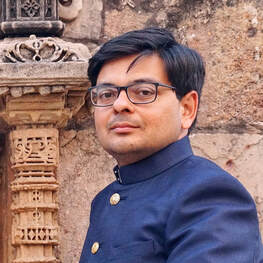
Dr. Krup Vasavda, BAMS, MD-Ayu, Gujarat, India - is working as Associate professor Department of Agadtantra in J S Ayurveda College, Nadiad, Gujarat, India. Presently he is pursuing Ph D from Parul University, Vadodara. He is a Review Board Member Gavin Publication and 8th WAC. He obtained his UG from Govt. Akhandanand Ayurveda College & Hospital, Ahmedabad, and Gujarat, India. He obtained his PG from Sri Dharmasthala Manjunatheshwara College of Ayurveda & Hospital, Hassan, India. He is expert in yoga and naturopathy. He is a practicing Ayurvedic physician and speciality in Ayurvedic management of Diabetes mellitus. He is a specialist of pain management by various Ayurveda therapies. He has published many papers in nation and international peer reviewed journals. He is Post graduate Diploma in Clinical Research and Clinical Data Management from ICBio, Bangalore. Dr. Krup Vasavda is a supporting member of AAPNA, USA.
Topic: Pain Management of Sciatic through Ayurveda - A multi model clinical approach
Abstract: The current clinical study was undertaken to evaluate the efficacy of Ayurveda treatment in the management of Sciatica (Gridhrasi). Sciatica is one among 80 types of diseases. Sciatica is one of the Vata disorder which is caused by aggravated Vata imbalance This disease is characterized by pain in the waist, back, thigh, knee and calf regions along the course of sciatic nerve. Conventional treatment usually advices analgesics, bed rest and physiotherapy for sciatica as per the condition. People who have significant neurologic deficit might be advised for surgery. There is no such satisfactory treatment for this disease in modern medicine; in today's era pain relief by Ayurveda treatment is of prime importance to resume normal activities. Hence a multi model treatment protocol which includes Snehapana, Swedana, Vasti and other Panchkarma therapies was adopted for healing of pain. Present clinical study is a single blind clinical study where in above protocol was advised in the patients of sciatica. The signs and symptoms were assessed before and after treatment based on the grading. The statistical analysis revealed that there is statistically significant improvement in symptoms of sciatica and reduction of pain generated from back to legs. This study shows that the classical sciatica treatment like Snehapana, Swedena, and Vasti along with pacification medicines is very effective in sciatica.
Topic: Pain Management of Sciatic through Ayurveda - A multi model clinical approach
Abstract: The current clinical study was undertaken to evaluate the efficacy of Ayurveda treatment in the management of Sciatica (Gridhrasi). Sciatica is one among 80 types of diseases. Sciatica is one of the Vata disorder which is caused by aggravated Vata imbalance This disease is characterized by pain in the waist, back, thigh, knee and calf regions along the course of sciatic nerve. Conventional treatment usually advices analgesics, bed rest and physiotherapy for sciatica as per the condition. People who have significant neurologic deficit might be advised for surgery. There is no such satisfactory treatment for this disease in modern medicine; in today's era pain relief by Ayurveda treatment is of prime importance to resume normal activities. Hence a multi model treatment protocol which includes Snehapana, Swedana, Vasti and other Panchkarma therapies was adopted for healing of pain. Present clinical study is a single blind clinical study where in above protocol was advised in the patients of sciatica. The signs and symptoms were assessed before and after treatment based on the grading. The statistical analysis revealed that there is statistically significant improvement in symptoms of sciatica and reduction of pain generated from back to legs. This study shows that the classical sciatica treatment like Snehapana, Swedena, and Vasti along with pacification medicines is very effective in sciatica.
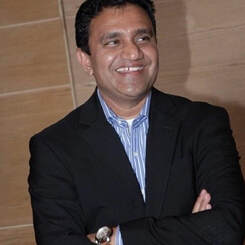
Dr. Sarat Addanki, AyD, California, USA - Co-founder and Chairman of Ayurway USA & Radhaas Ayurway India, is an Ayurvedic Doctor from California College of Ayurveda with a Bachelor’s degree in Computer Science and Engineering from Osmania University. He is a highly accomplished entrepreneur and a quality assurance professional with an impressive 27-year background in the implementation of Quality Programs companies such as McKesson Corporation, Tesla Motors, William’s Sonoma and other fortune 500 companies.
Deeply distressed after losing his mother to cancer, he did his Doctor program in Ayurveda at California College of Ayurveda, and involved himself in Ayurveda and understood how it can benefit wellness seekers and help them overcome pain and side effects of conventional cancer therapy. He is also rooted deeply into a spiritual path, by being a practitioner of Yoga, Pranayama and Kriya Yoga since 2001. Dr. Sarat also happens to be a disciple of Sri Paramahamsha Yogananda - one of the most celebrated Yogis both in the eastern and western worlds.
At Ayurway, he focuses on creating awareness about various natural healing processes through Ayurveda, Western Herbology, Panchakarma, Aroma Therapy, Mental Imagery, Music Therapy, etc. and brings in a new perspective towards cancer prevention and supportive care. During COVID 19 pandemic, his team reached out over 135,000 people and ensured they received food and nutrition on time.
Topic: Management of side effects, including pain during Chemo and Radio therapy
Abstract: Role of Ayurveda, Diet and Nutrition, Marma therapy, Aromatherapy, Music therapy and Yoga, Pranayama and meditation in cancer support care in Pre, During and Post conventional cancer treatments. How it will benefit cancer wellness seekers to reduce side effects of Chemo and Radio therapy and increase their confidence, willingness to live, improve their immunity and overall quality of life. I will be presenting our last two years of clinical experience and results.
Deeply distressed after losing his mother to cancer, he did his Doctor program in Ayurveda at California College of Ayurveda, and involved himself in Ayurveda and understood how it can benefit wellness seekers and help them overcome pain and side effects of conventional cancer therapy. He is also rooted deeply into a spiritual path, by being a practitioner of Yoga, Pranayama and Kriya Yoga since 2001. Dr. Sarat also happens to be a disciple of Sri Paramahamsha Yogananda - one of the most celebrated Yogis both in the eastern and western worlds.
At Ayurway, he focuses on creating awareness about various natural healing processes through Ayurveda, Western Herbology, Panchakarma, Aroma Therapy, Mental Imagery, Music Therapy, etc. and brings in a new perspective towards cancer prevention and supportive care. During COVID 19 pandemic, his team reached out over 135,000 people and ensured they received food and nutrition on time.
Topic: Management of side effects, including pain during Chemo and Radio therapy
Abstract: Role of Ayurveda, Diet and Nutrition, Marma therapy, Aromatherapy, Music therapy and Yoga, Pranayama and meditation in cancer support care in Pre, During and Post conventional cancer treatments. How it will benefit cancer wellness seekers to reduce side effects of Chemo and Radio therapy and increase their confidence, willingness to live, improve their immunity and overall quality of life. I will be presenting our last two years of clinical experience and results.
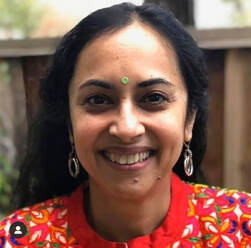
Anuradha Gupta, CAP, MBA, California, USA - I am an Ayurvedic Practitioner, Engineer, MBA and writer with a corporate background. I am co-founder of my practice, Ayurvedic Footprints, copywriter with Kerala Ayurveda, USA and I also write Ayurveda articles for Art of Living and Sri Sri Tattva USA.
Topic: Ayurveda and Lower Back Pain
Abstract: Lower back pain or lumbago effects more than 540 million people worldwide and a literature and studies now suggest early return to normal activities, selective use of imaging and self-care interventions. How does Ayurveda help with pain management through a root cause rather than symptomatic approach, Kati shoola specifically and what solutions does it provide? How can Ayurveda improve the quality of our lifespan with the incidence of back pain being so high; - 80 % Americans will experience back pain sometime in their life. Case study will be included.
Topic: Ayurveda and Lower Back Pain
Abstract: Lower back pain or lumbago effects more than 540 million people worldwide and a literature and studies now suggest early return to normal activities, selective use of imaging and self-care interventions. How does Ayurveda help with pain management through a root cause rather than symptomatic approach, Kati shoola specifically and what solutions does it provide? How can Ayurveda improve the quality of our lifespan with the incidence of back pain being so high; - 80 % Americans will experience back pain sometime in their life. Case study will be included.
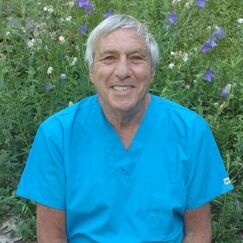
Dr. Victor Zeines, DDS, New York, USA - I have been practicing holistic dentistry for over thirty years. I am the author of Healthy Mouth Healthy Body Living A Longer LIfe, Your Tongue Never Lies
Topic: Pain Management for TMJ and Other Dental Disorders
Abstract: Using kinesology, this lecture will show how to determine TMJ and ways to correct the problem, using kinesiology and magnetic therapy and other simple exercises. I would also like to show how your mouth is an indicator of the bodies health using tongue assessments.
Topic: Pain Management for TMJ and Other Dental Disorders
Abstract: Using kinesology, this lecture will show how to determine TMJ and ways to correct the problem, using kinesiology and magnetic therapy and other simple exercises. I would also like to show how your mouth is an indicator of the bodies health using tongue assessments.
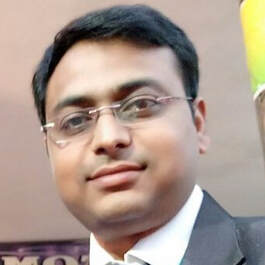
Dr. Gaurav Savarkar, BAMS, MD-Ayu, Maharashtra, India - Vice-Dean, MGACH&RC, and HOD of Dept. of Curriculum, SHPER, Datta Meghe Institute of Medical Sciences (Deemed to be University). Published more than 30 research articles in National & International Journal out of then around 8-9 research articles in PubMed / Scopus/ Web of Science. Editor/Associate Editors for 8 International and National Journal. Published 1 Book and 6 chapters. Copyright- more than 10 copyrights were registered and 2 patents are in the process. Resource person and guest speaker for various conferences and training programs. Research interest- Member of Research Cell at DMIMS (DU), working on various research projects and innovative ideas
Topic: The Role of Ayurveda in Migraine
Abstract: Migraine is an important issue in youngsters as well as adult age, severe throbbing pain, or a pulsing sensation. In Ayurveda, the various principles related to Prakruti, Agni, and Koshta applicable to the treatment protocol for Migraine. The pain is the aggravating sign of Vata Dosha, the Dosha management is the key factor useful for the treatment considering the Prakriti of the patient. The food habits and lifestyle are also playing a major role in pain management. The palliative treatment and Panchakarma having a very good effect on Migraine. The in-depth knowledge of the basic principles of Ayurveda is very essential to treat any kind of disease.
Topic: The Role of Ayurveda in Migraine
Abstract: Migraine is an important issue in youngsters as well as adult age, severe throbbing pain, or a pulsing sensation. In Ayurveda, the various principles related to Prakruti, Agni, and Koshta applicable to the treatment protocol for Migraine. The pain is the aggravating sign of Vata Dosha, the Dosha management is the key factor useful for the treatment considering the Prakriti of the patient. The food habits and lifestyle are also playing a major role in pain management. The palliative treatment and Panchakarma having a very good effect on Migraine. The in-depth knowledge of the basic principles of Ayurveda is very essential to treat any kind of disease.
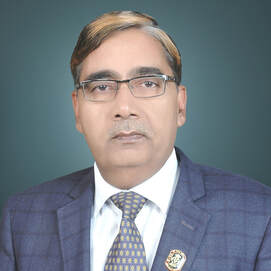
Dr. Kuldeep Pandey, BAMS, MD-Ayu, Uttar Pradesh, India - Working as Prof. iIn Sangyaharan( Anaesthesia) Faculty of Ayurveda, IMS, BHU, Varanasi. Prof.I/C Pain and Palliative Care, Running Palliative Care unit ( UPSHAMI CHIKITSA). Specially for Terminally ill cancer patients in Collaboration with Dept. of Radiotherapy and Radiation Medicine, IMS, BHU. Teaching Experience 29 years, Supervised 28 M.D ,3 Ph.D, Published-more than 80 papers, Organized National and International Conferences- 20,Workshops on CCPR-more than 50,Received Awards-Three, Orations-8,Guest lectures-more than 100,Former Head of the Dept. Former President Association of Anesthetists of Indian Medicine Central Council, Associate Editor Sangyaharan shosh, Editor Expert-Journal of Research and Education in Indian Medicine Life Member - National Integrated Medical Association – India
Life Member- Bhartiya Chikitsak Shikshak Sangh – India, Life Member- Research Society of Anesthesiology and Clinical Pharmacology, Life Member - Association of Anesthesiologists of Indian Medicine – India, Life Member- National Sushruta Association – India, Life Member- All India Ayurvedic Specialists (P.G.) Association, India
Topic: Cancer Pain Management - Challenges and Perspective in Ayurveda
Abstract: Ayurveda, the sciences of life not only deals with the treatment of disease but it also maintains the quality of life even in incurable conditions of disease. The approach of Ayurveda towards health and diseases is based on its unique principle of Satva (Psychophysical strength), Atma (Eternal soul), Sharir (Body), Tridosha, Seven dhatus (basic anatomical constituents of body)and Malas (by-products and wastes). Like other system of medicine, Ayurveda has its own role in prevention and management of cancer. The principals and drugs of Ayurveda can play a better role to minimize the ill effects of disease and drug induced systemic disorders. Modern medicine keeps miles ahead in cancer management. Newer and newer therapeutic measures are emerging and in the near future, we hope that this deadly disease will be under control. But the major problem is treatment expenses also getting up steeply and the average people find these measures untouchable. The treatment modalities are also not very feasible to patient as it include surgery, radiation, chemotherapy and many such painful procedures along with their own draw back or ill effects like-Alopecia, Mucositis, Xerostemia, Fibrosis, Arrhythmia, Nausea, vomiting, Diarrhoea, Erythema, Thrombocytopenia Thinning of skin, Sensory neuropathy, Motor neuropathy, Nerve deafness, Renal impairment, Neutropenia, Anemia along with these difficulties related with existence and prolongation with cancer disease like-Loss of Weight, Insomnia, Pain, Anorexia, Nausea, Vomiting, Dysphasia, Dyspnoea, Diarrhea, Edema, Ascites, Plural Effusion, Haemorrhage, Weakness, Drowsiness, Loss of social role, Social isolation, Dependency, Personality changes, Sadness, Depression, Anger, Fatigue and Financial difficulties etc. A large numbers of immune-modulators, Pain relievers, Ojas enhancer and Anti- cancerous herbs are being experimented in other aspect can be utilized as an adjuvant in this regard to improve the quality of life of a cancer patient. As a matter of fact in a patients suffering from cancer like disease, there is drastic fall in immunity as well as raised tendency of psychosocial pains. In texts of Ayurveda a large number of drugs possessing anti-cancerous, immuno enhancer properties like – Brahmi, Ashwagandha, Arjuna, Haridra, Bhallataka, Guduchi and analgesic properties viz, Rasna, Eranda, Nirgundi and Parijat etc. have been described in Samhitas. The Tridimensional module of Ayurvedic treatment for cancer pain management in detailed shall be discussed and be presented.
Life Member- Bhartiya Chikitsak Shikshak Sangh – India, Life Member- Research Society of Anesthesiology and Clinical Pharmacology, Life Member - Association of Anesthesiologists of Indian Medicine – India, Life Member- National Sushruta Association – India, Life Member- All India Ayurvedic Specialists (P.G.) Association, India
Topic: Cancer Pain Management - Challenges and Perspective in Ayurveda
Abstract: Ayurveda, the sciences of life not only deals with the treatment of disease but it also maintains the quality of life even in incurable conditions of disease. The approach of Ayurveda towards health and diseases is based on its unique principle of Satva (Psychophysical strength), Atma (Eternal soul), Sharir (Body), Tridosha, Seven dhatus (basic anatomical constituents of body)and Malas (by-products and wastes). Like other system of medicine, Ayurveda has its own role in prevention and management of cancer. The principals and drugs of Ayurveda can play a better role to minimize the ill effects of disease and drug induced systemic disorders. Modern medicine keeps miles ahead in cancer management. Newer and newer therapeutic measures are emerging and in the near future, we hope that this deadly disease will be under control. But the major problem is treatment expenses also getting up steeply and the average people find these measures untouchable. The treatment modalities are also not very feasible to patient as it include surgery, radiation, chemotherapy and many such painful procedures along with their own draw back or ill effects like-Alopecia, Mucositis, Xerostemia, Fibrosis, Arrhythmia, Nausea, vomiting, Diarrhoea, Erythema, Thrombocytopenia Thinning of skin, Sensory neuropathy, Motor neuropathy, Nerve deafness, Renal impairment, Neutropenia, Anemia along with these difficulties related with existence and prolongation with cancer disease like-Loss of Weight, Insomnia, Pain, Anorexia, Nausea, Vomiting, Dysphasia, Dyspnoea, Diarrhea, Edema, Ascites, Plural Effusion, Haemorrhage, Weakness, Drowsiness, Loss of social role, Social isolation, Dependency, Personality changes, Sadness, Depression, Anger, Fatigue and Financial difficulties etc. A large numbers of immune-modulators, Pain relievers, Ojas enhancer and Anti- cancerous herbs are being experimented in other aspect can be utilized as an adjuvant in this regard to improve the quality of life of a cancer patient. As a matter of fact in a patients suffering from cancer like disease, there is drastic fall in immunity as well as raised tendency of psychosocial pains. In texts of Ayurveda a large number of drugs possessing anti-cancerous, immuno enhancer properties like – Brahmi, Ashwagandha, Arjuna, Haridra, Bhallataka, Guduchi and analgesic properties viz, Rasna, Eranda, Nirgundi and Parijat etc. have been described in Samhitas. The Tridimensional module of Ayurvedic treatment for cancer pain management in detailed shall be discussed and be presented.
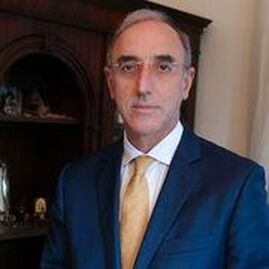
Dr. Nikolaos Kostopoulos, MD, Athens, Greece - qualified at Athens Medical University, Greece. He worked in the Renal Unit of the Naval Hospital in Athens, in the Intensive Care Unit of the Hospital of Chest Diseases in Athens and in the Respiratory Unit of the Manchester Royal Infirmary in England. Dr. Kostopoulos was introduced to Ayurveda by Vaidya Asvin Barot and, in collaboration with him, he practiced privately in Harley street in London (UK) for 10 years combining Ayurveda and modern medicine. He established the Holistic Health Centre in Athens in 1999.
In addition to running his medical practice, Dr. Kostopoulos is involved in ongoing research within the field of psychosomatic disease and stress management through Ayurveda. He is a member of the Faculty of Homeopathy in England and of the Hellenic Homeopathic Association in Greece. He regularly participates in International conferences and has given lectures in the UK, Ireland, Germany, France, Switzerland, Japan, Canada and India promoting a modern, scientific approach to Ayurveda
Topic: Thermal Microcautery (TMC) or Agni Karma in pain management
Abstract: Agni Karma or in modern terms Thermal Microcautery (TMC) is a practical efficient method of management in migraine and chronic pain. Although it was initially described in the ancient textbook of Sushruta Samhita, modern neurophysiology findings offer a solid theoretical scientific background of Thermal Microcautery’s mechanism of action. Thermal Microcautery (TMC) is a form of peripheral nerve field stimulation (PNFS). It is a new method of neuromodulation. There is activation of the A(touch), Aδ and c (fast and slow pain) nerve fibers possibly working by the mechanism of the Gate theory of pain (2). There is facilitation of the descending noxious inhibitory pathway, which is well known to be activated by noxious stimuli. Additionally, it may be a new direct brain mechanism involving neuro matrix theory, offset analgesia mechanisms and modulation of learning pathways. Pain is one of the main reasons patients visit physicians and migraine and chronic pain take the form of an epidemic in the modern world. NSAIDs and opioid derivatives have limited use in chronic pain because of side effects and the opioid crisis is now a worldwide problem with far reaching consequences. When we apply Thermal Micro Cautery we use a highly effective herbal cream that has been developed after a lot of research in laboratories in Greece and in Miami University for management of deep second degree burns with excellent results. Additionally, and most importantly, its application stops the burn pain within few seconds. In my presentation regarding Ayurveda and pain management I will talk about my practical experience from the use of the Thermal Microcautery in chronic pain and migraine.
Two publications are already available for this method:
1) Thermal Microcautery, a Form of Peripheral Nerve Field Stimulation for Treatment of Painful Knee Osteoarthritis: Non-Randomized Controlled Trial
In the journal Pain Studies and Treatment in January 2019 07(03):33-54
2) Application of Thermal Microcautery in migraine management
In the journal Headache Medicine December 26, 2019. DOI: 10.5935/2178-7468.20190026
More information can be found as well in the following websites:
www.hhcentre.com www.globalagnikarma.com www.tmcmigraine.com
Conclusively the method of Thermal Micro Cautery (TMC) can be of amazing help if applied properly according to strict precise protocols and I dare say can become a silver bullet for the future of pain management.
In addition to running his medical practice, Dr. Kostopoulos is involved in ongoing research within the field of psychosomatic disease and stress management through Ayurveda. He is a member of the Faculty of Homeopathy in England and of the Hellenic Homeopathic Association in Greece. He regularly participates in International conferences and has given lectures in the UK, Ireland, Germany, France, Switzerland, Japan, Canada and India promoting a modern, scientific approach to Ayurveda
Topic: Thermal Microcautery (TMC) or Agni Karma in pain management
Abstract: Agni Karma or in modern terms Thermal Microcautery (TMC) is a practical efficient method of management in migraine and chronic pain. Although it was initially described in the ancient textbook of Sushruta Samhita, modern neurophysiology findings offer a solid theoretical scientific background of Thermal Microcautery’s mechanism of action. Thermal Microcautery (TMC) is a form of peripheral nerve field stimulation (PNFS). It is a new method of neuromodulation. There is activation of the A(touch), Aδ and c (fast and slow pain) nerve fibers possibly working by the mechanism of the Gate theory of pain (2). There is facilitation of the descending noxious inhibitory pathway, which is well known to be activated by noxious stimuli. Additionally, it may be a new direct brain mechanism involving neuro matrix theory, offset analgesia mechanisms and modulation of learning pathways. Pain is one of the main reasons patients visit physicians and migraine and chronic pain take the form of an epidemic in the modern world. NSAIDs and opioid derivatives have limited use in chronic pain because of side effects and the opioid crisis is now a worldwide problem with far reaching consequences. When we apply Thermal Micro Cautery we use a highly effective herbal cream that has been developed after a lot of research in laboratories in Greece and in Miami University for management of deep second degree burns with excellent results. Additionally, and most importantly, its application stops the burn pain within few seconds. In my presentation regarding Ayurveda and pain management I will talk about my practical experience from the use of the Thermal Microcautery in chronic pain and migraine.
Two publications are already available for this method:
1) Thermal Microcautery, a Form of Peripheral Nerve Field Stimulation for Treatment of Painful Knee Osteoarthritis: Non-Randomized Controlled Trial
In the journal Pain Studies and Treatment in January 2019 07(03):33-54
2) Application of Thermal Microcautery in migraine management
In the journal Headache Medicine December 26, 2019. DOI: 10.5935/2178-7468.20190026
More information can be found as well in the following websites:
www.hhcentre.com www.globalagnikarma.com www.tmcmigraine.com
Conclusively the method of Thermal Micro Cautery (TMC) can be of amazing help if applied properly according to strict precise protocols and I dare say can become a silver bullet for the future of pain management.
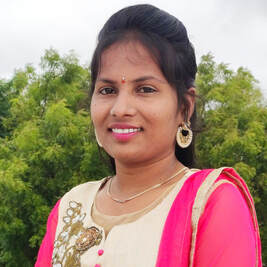
Dr. Ashwini Honagannavar, BAMS, MD-Ayu, Karnataka, India - completed under graduation in DGMAMC Gadag, post graduation in Kriya Sharira at SDMCAH Hassan. Presently working as Assistant professor department of Kriya Sharira in DGMAMC Gadag.
Topic: Dysmenorrhea and it's management through Ayurveda
Abstract: Dysmenorrhea is commonly occurring in today's era due to Life style of women and other reasons too. But Ayurveda has different treatment modalities and principles to treat dysmenorrhea. In this conference I will go through what are the treatment protocols and modalities to treat dysmenorrhea.
Topic: Dysmenorrhea and it's management through Ayurveda
Abstract: Dysmenorrhea is commonly occurring in today's era due to Life style of women and other reasons too. But Ayurveda has different treatment modalities and principles to treat dysmenorrhea. In this conference I will go through what are the treatment protocols and modalities to treat dysmenorrhea.
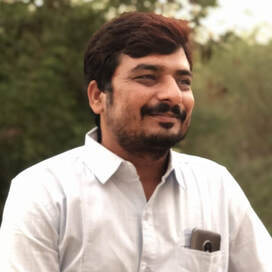
Dr. Shivanand Kembhavi, BAMS, MS-Ayu, Karnataka, India - completed PG In Shalya Tantra at S.D.M. College of Ayurveda Udupi, presently Working as Prof. S. S. Ayurvedic medical college. Haveri and PhD Scholar Parul University Vadodara, Gujarat, India.
Topic: Post operative pain management in a Hemorrhoidectomy case with Matra basti (enema with medicated oil)
Abstract: Post operative pain management is always a challenge for ano rectal surgeons. Hemorrhoidectomy is often involved with severe post operative pain and discomfort during defecation. Ayurvedic surgeon most of the time depends of contemporary medical science and uses analgesics, which has its own adverse effects. Many times mere oral ayurvedic medicines are not sufficient to mange post operative pain Basti (enema with medicines) is regarded as best treatment for vata dosha vitiation. Vata dosh vitiation is the main cause for the pain. In post operative wounds also, trauma and blood loss leads to vata vitiation and causes pain. There are different types of basti’s explained in the classics. Matra basti (enema with medicated oil) is a type of Sneha Basti which can be given in all seasons without any strict regimen of Diet. It is a procedure where a minimal quantity of medicated oil or medicated ghee is used in the form of enema. Post operative wound will aggravate vata and leads pain. Hence matra basti which is having minimal medicine is tried in post operative cases of hemorrhoidectomy. This increases time taken for the onset of pain after hemorrhoidectomy and also helps in easy evacuation of stools in post operative period.
Topic: Post operative pain management in a Hemorrhoidectomy case with Matra basti (enema with medicated oil)
Abstract: Post operative pain management is always a challenge for ano rectal surgeons. Hemorrhoidectomy is often involved with severe post operative pain and discomfort during defecation. Ayurvedic surgeon most of the time depends of contemporary medical science and uses analgesics, which has its own adverse effects. Many times mere oral ayurvedic medicines are not sufficient to mange post operative pain Basti (enema with medicines) is regarded as best treatment for vata dosha vitiation. Vata dosh vitiation is the main cause for the pain. In post operative wounds also, trauma and blood loss leads to vata vitiation and causes pain. There are different types of basti’s explained in the classics. Matra basti (enema with medicated oil) is a type of Sneha Basti which can be given in all seasons without any strict regimen of Diet. It is a procedure where a minimal quantity of medicated oil or medicated ghee is used in the form of enema. Post operative wound will aggravate vata and leads pain. Hence matra basti which is having minimal medicine is tried in post operative cases of hemorrhoidectomy. This increases time taken for the onset of pain after hemorrhoidectomy and also helps in easy evacuation of stools in post operative period.
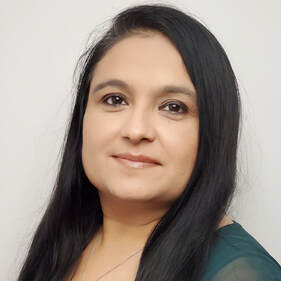
Dr. Sandeep Kaur Mangat, BAMS, MD-Ayu, Manitoba, Canada - has more than 15 years of experience in educational and clinical Ayurveda. She graduated in Ayurvedic Medicine from Baba Farid University of Health Sciences in 2005 (BAMS) and completed her Post Graduation from , Maharashtra University of Health Sciences Maharashtra and was awarded ”Ayurveda Vachaspti” i.e. Doctor of Medicine (Ayurveda) in 2009. During her Post Graduation she worked as Registrar in Ayurvedic Medicine and Panchkarma Department. She later joined Desh Bhagat University as Assistant Professor in department of Ayurvedic Medicine for 2 years and later Guru Nanak Ayurvedic College and Research Institute for 3 years .Besides teaching Ayurveda degree students she practiced Ayurvedic medicine and Panchkarma in hospitals of respective Colleges. She has continued expanding her knowledge in field of Ayurveda with attending several workshops , CME Programs, Seminars. She has to her credit many presentations and lectures at various platforms Organized by Department of AYUSH and Ministry of Health and Family Welfare ,Govt of Punjab.
Topic: Neuropathic Pains in Ayurveda
Abstract: Pain is an unpleasant sensation and emotional experience in our daily life which is an alert of tissue injury to prevent further or impending tissue damage. Neuropathic pain comes from direct consequence of a lesion or disease affecting the somatosensory system. Ayurveda has an effective concept of understanding the patho-physiology of the various forms of neuropathic pains. It cateogorises such ailments in "Vata" form of diseases and has advocated use of various non invasive Panchkarma therapies alongwith herbs ,diet and lifestyle modifications for managing such pains.
Topic: Neuropathic Pains in Ayurveda
Abstract: Pain is an unpleasant sensation and emotional experience in our daily life which is an alert of tissue injury to prevent further or impending tissue damage. Neuropathic pain comes from direct consequence of a lesion or disease affecting the somatosensory system. Ayurveda has an effective concept of understanding the patho-physiology of the various forms of neuropathic pains. It cateogorises such ailments in "Vata" form of diseases and has advocated use of various non invasive Panchkarma therapies alongwith herbs ,diet and lifestyle modifications for managing such pains.

Amandeep (Annu) Gaidhu, MA-CYC, RAP, RAYT, Toronto, Canada - Child and Youth Worker, Registered Ayurvedic Practitioner, Registered Ayurvedic Yoga Teacher, Founder, Bliss Yoga With Annu Inc. Founder, Healing Hearts Project Poverty Relief Initiative Inc. Founder, Lakshmi Ayurveda Inc.
From a very young age, Annu learned that to heal and love others; we must first set it in motion for ourselves. After a successful career as former Miss India Canada, she began practicing Yoga in her early teens, eventually becoming Canadas youngest certified yoga teacher at the age of 17. As a South Asian Canadian woman, a daughter of immigrants that identifies with a disability, the practice of Yog and Ayurved taught her about the basic fundamental rights of existence, to love and be loved through unlearning internalized oppressive behaviors via self-knowledge and Self-awareness. Annu believes in centering the ancient principles of Ayurved and Yoga into a modern-day practice suitable for people in communities of all ages, abilities and body types. Annu specializes in supporting women, and young create and sustain healthy lifestyles for themselves and their families through proper diet and herbs aromatherapy, panchakarma, Yoga and meditation. My work focuses on trauma-informed training and practices.
Topic: Healing Psychological Trauma: Self in Ayurveda
Abstract: Every teaching in Ayurveda begins by honoring the divine healer within; without whom the discrimination to distinguish between disease and disharmony exists only when we begin to take responsibility in examining our own wounds first and health and healing into our own hands. We must determine the level of our nature from which our psychological problems derive to treat them properly. An Ayurvedic approach to treatment and prevention of disease begins by examining all aspects of Self - the body, mind and spirit. The mind has a very powerful influence on our overall health and well-being. In a balanced state, the body and mind create harmony; when unbalanced, it creates disharmony, i.e. disease. We must determine the level of our nature (Manas Prakriti) from which our psychological problems derive to treat them properly. Participants will be given tools to explore your individual nature's strengths and weaknesses (Manas Prakruti) and examine your mind's current state (Manas Vikruti). Topics covered include the three energetic bodies, the five koshas, the seven chakras, the five pranas, and immunity building. This will be an experiential presentation, open to all.
From a very young age, Annu learned that to heal and love others; we must first set it in motion for ourselves. After a successful career as former Miss India Canada, she began practicing Yoga in her early teens, eventually becoming Canadas youngest certified yoga teacher at the age of 17. As a South Asian Canadian woman, a daughter of immigrants that identifies with a disability, the practice of Yog and Ayurved taught her about the basic fundamental rights of existence, to love and be loved through unlearning internalized oppressive behaviors via self-knowledge and Self-awareness. Annu believes in centering the ancient principles of Ayurved and Yoga into a modern-day practice suitable for people in communities of all ages, abilities and body types. Annu specializes in supporting women, and young create and sustain healthy lifestyles for themselves and their families through proper diet and herbs aromatherapy, panchakarma, Yoga and meditation. My work focuses on trauma-informed training and practices.
Topic: Healing Psychological Trauma: Self in Ayurveda
Abstract: Every teaching in Ayurveda begins by honoring the divine healer within; without whom the discrimination to distinguish between disease and disharmony exists only when we begin to take responsibility in examining our own wounds first and health and healing into our own hands. We must determine the level of our nature from which our psychological problems derive to treat them properly. An Ayurvedic approach to treatment and prevention of disease begins by examining all aspects of Self - the body, mind and spirit. The mind has a very powerful influence on our overall health and well-being. In a balanced state, the body and mind create harmony; when unbalanced, it creates disharmony, i.e. disease. We must determine the level of our nature (Manas Prakriti) from which our psychological problems derive to treat them properly. Participants will be given tools to explore your individual nature's strengths and weaknesses (Manas Prakruti) and examine your mind's current state (Manas Vikruti). Topics covered include the three energetic bodies, the five koshas, the seven chakras, the five pranas, and immunity building. This will be an experiential presentation, open to all.
